Dominant Impression
A dominant impression results in a vivid mental picture of a person, place, or object. Show the reader your dominant impression; don’t tell the reader. Your impression of someone or something starts as a vague picture in your mind, but your mission is to take it to a high-definition, three-dimensional picture for your reader, using sensory words, details, and dialogue.
Below are two paragraphs. The first one illustrates a vague dominant impression, and the second one is a revised, clear version.

Vague Dominant Impression
It was hot in Africa. Even with the windows open, the bus was noisy and hot. The walls of the bus were grey. Each seat inside the bus held two people. The bus was full of people from different parts of Africa. The bus driver was an old man and was a bad driver. It was noisy, dusty, and there were flies. Some passengers worried they would be kicked off with their animals. The bus was really crowded, and things got worse as the day went on.
Clear Dominant Impression
Somalia. A plateau-like place situated at the end of the horn of Africa about the size of Texas. I remember one day in particular that was different from the rest. The summer sun beat down relentlessly on the parched, chapped earth. The air was hot, almost stagnant. The steamy breeze from the open windows of the bus did little to ease the discomfort. Dust sputtered out from underneath the tires, making tinking sounds against the fender, leaving a cloudy trail nearly a mile in length behind it. People swatted the buzzing flies from their faces; others shushed their goats, afraid they would be kicked off for the noise. It was half past three and already the bus had reached its full capacity, unusual for this time of day. Little did we know, the hot and dirty bus ride would be the best part of our trip (Sutis).
Select a topic you know well. In the example above, a STLCC student is from Somalia and wrote about a bus ride they remember well. Ask yourself, what is the one feature about your topic that you want to describe and go from there. What mood/feeling do you wish to create with your description: is it misery, mystery, awe, shock, alarm, happiness, sympathy, peace …? A place to start is to first write down ten adjectives to describe the feeling you wish to create. From the list of ten adjectives, pick a few to focus on and add details, strong nouns and active verbs.
First Draft
Think about giving your reader a reason to read. Why do you want to share this dominant impression with your readers? The answer to this question may be part of your introduction, thesis, topic sentence, or even your conclusion. Once you find that reason, you can begin using the following writing strategies:
- Use sensory details/adjectives/adverbs:
to see - The tiny caterpillar climbed up the bright green leaf. to hear - The passengers heard the loud screech of the train’s wheels. to smell - The sweet aroma of fresh strawberries brought back memories of summer. to touch - The mud felt slimy and cold between my toes. to taste - The fresh, tangy lemon drops made my lips pucker. to feel - In the hot July sun, our shirts felt like wet paper sticking to our backs.
- Use literary language:
Metaphor - Life is a journey. Simile - My love is like a red, red rose (Burns). Hyperbole - I’m hungry enough to eat a horse.
- Use dialogue: “Stop pulling my hair.”
- Add concrete and proper nouns:
Concrete noun - Instead of “The very small dog was making an irritating noise," write, "The toy poodle yipped" (Plourde). Proper noun - Instead of “Professor," write “Professor Lopez."
- Add active, unexpected verbs: She strengthened my belief in myself.
Now it's time to polish your writing. Does every word contribute to the overall effect/feeling/mood you wish to convey? Ask yourself, will the reader be interested in my dominant impression? Do you help the reader see the scene, or is your description merely a step-by-step tour? Did you avoid use of passive verbs (is, was, were)?
- Resources
- Prospective Students
- Current Students
- Faculty & Staff
- Alumni & Friends
- News & Media
Descriptive Writing
Descriptive writing has a unique power and appeal, as it evokes sights, smells, sounds, textures, and tastes. Using description in your writing brings the world within your text to your reader.
Creating A Dominant Impression
The first step in using effective description is to focus on a dominant impression. A dominant impression creates a mood or atmosphere in your paper. This mood can be conveyed through effective descriptive writing. For example, pay attention to the mood in the following paragraph.
My family ate dinner at Merrymead Diner every Friday night while I was a child. We huddled close in a large, red booth as we scanned the familiar menu. The aroma of gravy over creamy mashed potatoes lingered in the air. I snuggled close to my mom's arm as she ordered our drinks. The waitress brought our thick milkshakes out on a tray and placed them in front of us on a paper doily. The jukebox in the back played songs that we all knew the words to, and we sang along until our food arrived, hot and enticing on the table. Outside I shivered in the cold air, but in the diner I was cozy, munching on crispy French fries and enjoying a hot, juicy cheeseburger.
Can you feel the mood of this paragraph? The author is trying to convey a feeling of safety , comfort , and happiness . Notice how the author does not tell the reader she feels safe and happy. She shows the reader through descriptive detail. Her dominant impression is one of comfort and happiness.
Sensory Details
Sensory description uses sight, sound, smell, touch, and taste to sketch an impression in writing. Consider a paragraph without sensory description.
My sister and I walked along the boardwalk each afternoon of our vacation. We watched the ocean and listened to the waves. Usually we stopped for a snack at one of the many stores that line the boardwalk. Afterwards, we walked along the beach and let our feet get wet.
Now, consider this paragraph with all five sensory descriptors: sight, sound, smell, taste, and touch.
My sister and I walked along the boardwalk one afternoon on our vacation. The hot boards warmed our bare feet. We watched the foam-covered waves topple over each other and then slide back into sea. The crashing water competed with the exuberant yells from the seagulls. We bought a perfectly oval fluff of pink cotton candy that dissolved sweetly in our mouths. Afterwards, we walked along the edge of the water, letting the warm salty air blow our hair away from our necks as the cool water lapped over our toes.
Vivid vs. Vague Language
The sensory details you select in your writing should create for your reader the same picture you have in your mind. Instead of using vague, general words, your sensory language should be concrete and sensory-packed. This makes the difference between vivid and vague language. Take a look at the comparison between vague and vivid sentences.
Vary Sentence Structure
When using descriptive language, it is important to vary your sentence structure. Try to avoid using the same subject-verb pattern in all sentences. Embedding descriptive elements and combining sentences can help to avoid the routine subject-verb structure.
The hall was empty. She ran towards the classroom. She entered right after the bell rang.
Varying this sentence structure by embedding descriptive detail breaks the monotonous tone and the clipped, subject-verb style.
Racing down an empty hall, she skidded into the classroom, breathless, just as the bell clanged above her.
What to Avoid When Using Sensory Detail
Too many adjectives—retain only the most powerful words in your writing, deleting any unnecessary words
Too many adverbs—verbs are stronger than adverbs. She strolled into the room is more powerful than She walked casually into the room.
Clichéd figures of speech—overused language, such as green with envy , signals a lack of imagination. Use fresh, descriptive words that go against rote thinking.
by Ali Faucher
More writing help.
The Kathleen Jones White Writing Center provides tutoring services, workshops, and writing resources.
- In-Person : 203 Stabley Library
- Online Tutoring: Use the online writing center .
- Instructors: Request a workshop for your class .
- Students: Attend a Wednesday-night workshop .
- Online Workshops: APA Documentation , MLA Documentation .
Online help with
- Organization
- Research documentation
- Kathleen Jones White Writing Center
- Stabley Library, Room 203 431 South Eleventh Street Indiana, PA 15705
- Phone: 724-357-3029
- [email protected]
- U.S. Locations
- UMGC Europe
- Learn Online
- Find Answers
- 855-655-8682
- Current Students
UMGC Effective Writing Center Writing to Describe
Explore more of umgc.
- Writing Resources
Our ability to be part of the physical world is made possible through our five senses: touch, sound, taste, sight and smell. So it’s not surprising that description, a form of writing that draws upon the five senses, often plays an important role in the writing we do, whether in school or on the job.
Real-World Description
In a marketing class you might describe how an advertisement uses sensory details to entice its audience to a spa.
As witness to a crime you might have to describe a suspect to law enforcement.
As a doctor or nurse you might have to describe changes in a patient over the course of a treatment.
Dominant Impressions
Most often, the purpose of these descriptions is to create a dominant impression for the reader. All of the details and language that you use should contribute to creating this cumulative effect.
A dominant impression is the single image and emotion you wish to create for the reader, word-by-word, detail-by-detail. Take, for instance, the aftermath of a flood. Let's say that you need to describe the devastation of a 100-year flood as a means to discuss decision-making in community planning land use.
For your writing to achieve its purpose, you would use description to evoke the five senses as your strive to create this dominant impression of the damage endured by an existing community to spur your reader to action:
- Sight : The shops and restaurants of the town's main commerce corridor stand empty, their goods washed out into the street.
- Hearing : Rushing waters made it difficult for those in need of help to be heard.
- Touch : Yards have become mud fields, pulling at the feet of those trying to survey the damage.
- Taste : Displaced community members are reliant upon canned food as they shelter in the high school gymnasium.
- Smell : Mold has already taken root across the town, it's distinctive smell permeating the air.
Body Paragraph Structures
The introduction paragraph of your descriptive essay would, like openings of other types of academic writing, introduce the subject and provide a thesis at or near the end of the paragraph. Next would come a series of body paragraphs that build the dominant impression with descriptive details. Methods of organizing these body paragraphs will vary depend on the subject and your approach to it.
Organizing Descriptive Paragraphs
Figurative language.
Language can be divided into two categories: literal and figurative . With literal language you mean exactly what you say: "That orange plant is a pumpkin." In this sentence, the word "pumpkin" has its literal meaning: a North American squash with a thick shell associated with Halloween. However, if you wrote "Because of her cold, Michelle's head felt like a pumpkin with nostrils," you don't really mean that Michelle's head feels like a squash. You used figurative language to evoke the stuffed-up, heavy feeling often produced by a head cold.
Figurative language is important in descriptive writing because it evokes the five senses--sight, hearing, touch, taste and smell--from the reader's memory. Three common types of figurative language for doing this are similes, metaphors, and personifications .
Simile : If you recognize the root word of "similar," that's because a simile says that one thing is similar to another in an important way. To make this comparison, a simile uses the words like, as, than, seems, or as if . Examples:
- Tonight's moon is brighter than the end of a flashlight.
- His face looked as beat up as an old running shoe.
- Taking drugs is like flushing your brains down a toilet.
- The old chain saw bucked up from the limb as if possessed by demons.
- She lives in a neighborhood so quiet even the houses seem asleep.
Metaphor : Metaphors also show how two dissimilar things can share an important trait. However, instead of saying something is like something else, the metaphor says that it is something else. Examples:
- Theodore is a hog when it comes to cheese pizza.
- When catching mice, our old cat is a bolt of cold fury, striking without warning.
- One of my favorite Elvis Presley lyrics is "I'm just a hunka hunka burning love ."
Personification : In this type of description, you give objects and abstractions human qualities in order to help them come alive for your reader's senses. Examples:
- Fate wriggled its way into our lives and soon we grew apart.
- At the end of the drag race, his hot rod was barely breathing .
- Her kiss left my lips dumbstruck with an ache no other woman could satisfy.
Just Close Your Eyes
Whatever the subject, descriptive writing provides one of the most creative assignments you receive in school. Nobel Prize-winning novelist William Faulkner once described his writing technique this way to students: “I close my eyes and write down everything I see.” Maybe you won’t win a prize, but writing to describe is your chance to use the power of words to let others glimpse what only you can see.

Using “like” and “as”: An Effective Writing Center 2-minute video
These two words might seem interchangeable, but deciding which to use in certain situations can improve your writing’s clarity.
Our helpful admissions advisors can help you choose an academic program to fit your career goals, estimate your transfer credits, and develop a plan for your education costs that fits your budget. If you’re a current UMGC student, please visit the Help Center .
Personal Information
Contact information, additional information.
By submitting this form, you acknowledge that you intend to sign this form electronically and that your electronic signature is the equivalent of a handwritten signature, with all the same legal and binding effect. You are giving your express written consent without obligation for UMGC to contact you regarding our educational programs and services using e-mail, phone, or text, including automated technology for calls and/or texts to the mobile number(s) provided. For more details, including how to opt out, read our privacy policy or contact an admissions advisor .
Please wait, your form is being submitted.
By using our website you agree to our use of cookies. Learn more about how we use cookies by reading our Privacy Policy .

Using Descriptive Detail
This guide will explore the various uses and applications of description. Its purpose is to demonstrate the effectiveness of writing which includes descriptive details.
A Definition of Descriptive Detail
Descriptive details allow sensory recreations of experiences, objects, or imaginings. In other words, description encourages a more concrete or sensory experience of a subject, one which allows the reader to transport himself or herself into a scene. Writing that lacks description is in danger of being plain or overly general.
Uses of Descriptive Detail
There are many different uses of descriptive detail. Although most commonly associated with creative writing, description enhances a wide variety of subjects. Writing which effectively uses descriptive detail will allow a reader to do more than merely see words on a page. Original description gives writing a sense of honesty and believability, while concise details can help enhance your focus. Descriptive details cause a reader to feel, to hear, to taste, to become intimately connected with the images and experiences being recreated.
Cara McDonald, GTA - Department of English Look. Your reader is a bored, tired little person, maybe sitting at a bus stop. Take care of them. Transport them. Let them smell your mom's coffee, let them see the ugly flowers on that dress you had to wear on the first day of Sunday School.
Mary Kate Perry, GTA - Department of English One of my favorite ways of explaining the importance of vivid description in fiction writing is E.L. Doctorow's "Not that it's raining, but the feel of being rained upon." You don't tell your reader that it's rainy, because they won't care. They won't identify. You have to make them care through speaking to their senses. We perceive the world through our senses.
In fiction writing, it is important to make your scenes and characters as vivid as possible. One way this can be accomplished is through the inclusion of descriptive details. Fiction which incorporates original sensory description has the power to actively involve and affect the reader. Without such details, fiction is in danger of becoming listless or flat. Description is equally as important as dialogue and plot in moving forward the action of a story.
Natalie Goldberg, Wild Mind "William Carlos Williams wrote a poem about standing by the water tap in his kitchen and waiting for it to freshen. You know city water: sometimes it comes out rusty and you wait for it to run clean. I've done it, but I've never thought about it until I read Williams's poem."
Poetry often begins with an image. Therefore, poetry is in a unique position to explore and exploit the possibilities of language. By utilizing effective descriptive details, the language of a poem is able to achieve power over the thoughts and feelings of readers. Rhythm and meter are important to poetry, but without descriptive detail a poem cannot engage the imagination or the senses.
Narrative Essay
Gilbert Findlay, Departement of English All writing is an act of definition. The writer uses some terms that are key to the subject. Take for example this passage from Itabari Njeri: 'Because of my family, I learned to see and hear the complexity and grand drama that underlay the simplest of human actions.' The key terms here are 'family,' complexity,' and 'human actions.' Then, the writer is obliged to follow with descriptive detail. It must be concrete in order to 'define' these terms in context . Without descriptive, contextual detail, the reader may only understand 'family' with reference to his or her own family, while what Njeri may be promising about an understanding of culture through family may be 90 degrees off from what the reader assumes. "
Persuasive Writing
Karen Wuest, GTA - Departement of English There is a significant difference between choosing details simply to describe something and selecting details that not only describe, but also reveal . This is particularly true in fiction—selective details which reveal character, or which might enlighten the reader about the narrator. It is also true in general, where details often reveal some deeper issue throbbing beneath the surface. That details can be used to describe is essential and true, but they should also go beyond that. Sheer description bogged down with details lacks energy, verve. The details must carry weight, reveal something beyond just the surface they have been describing.
In the Creative Writer's Handbook , Philip K. Jason and Allan B. Lefcowitz explain that "sensory experience is primary experience: we see, feel, taste, smell, and hear before we think, analyze, choose, and argue" (130). Therefore, before an argument can effectively persuade an audience, the writer must carefully select and utilize descriptive details. If a writer can effectively engage the reader's primary senses, then the audience can be more easily enticed to feel the validity of the argument. For example, an argument which provides a plea to end deforestation is far more moving when it includes an emotional and sensory depiction of the desolate environment, the ravaged wilderness, the displaced animals. Descriptive details can cause emotional triggers which are key when attempting to persuade an audience.
Summary/Response
Gilbert Findlay, Department of English The human mind cannot communicate in abstractions. If I write, 'communication is the most crucial element in contemporary society,' you, the reader think, 'gotta talk to my girlfriend.' But if I am more specific and write, 'Instant technological transfer of information from the World Wide Web to in-progress network reports of delicate diplomatic negotiations require that we reevaluate the way we respond to communications in contemporary society' then you, the reader, think, 'Oh! This writer is focusing on communication by the electronic media.' Bingo! Descriptive detail means clear communication.
Summary response writing is not exempt from the need to include descriptive detail. A descriptive summary/response essay will be effective if it includes both objective and subjective details. Objective details refer to concrete facts, while subjective details stress feelings about facts, places, people, and events. A balance between objective and subjective details will help the essay involve the emotions of the reader, while still relating the important facts.
Overall, a descriptive essay will focus upon one clear, dominant impression or idea. This dominant idea should be made clear in the thesis, and should guide the writer's selection of detail. Although the summary is not an appropriate place for a large amount of description, the main idea in the response can be effectively emphasized through the addition of clear creative and critical descriptive detail.
Types of Descriptive Detail
There are many different ways in which descriptive detail can be included in writing. Whether to describe, persuade, illustrate or demonstrate, the descriptive details you include in your writing should serve a purpose not just pad your writing with more words.
Sensory Detail
It is important to remember that human beings learn about the world through using the five senses. They are our primary source of knowledge about the world. Therefore, writing which incorporates vivid, sensory detail is more likely to engage and affect the reader.
The following writing sample uses sensory detail to create concrete images. Because the most effective way to incorporate sensory detail is to use all five senses in harmony, this sample provides an effective example of how sight, sound, smell, touch, and taste work together to strengthen writing. Each of the views highlights exactly how each sense is involved in improving the paragraph's imagery.
Example Text: Paragraph Without Sensory Detail
Grandmother Workman reached over and grabbed her grandson's arm. He was nervous because the staircase was so steep, but she leaned against him and they began to climb.
Comment: These are the beginning sentences of a paragraph which describes a boy helping an elderly woman up a flight of stairs. The scene seems simple enough, but it leaves the reader with many unanswered questions. Without the inclusion of sensory detail, the writing seems vague and non-specific. How might the author use descriptive detail to make the scene more vivid?
Example: Add Sight
Gandmother Workman lurched over and grabbed the pale skin of Randal's thin forearm with her leathery hand . The folds and creases beneath her skin coiled themselves out like electrical wiring, like the bloated, roughly-textured relief map of the world that his mother just posted above his bedside table. Randal looked ahead toward the winding spiral staircase, fidgeted with a small hole in his baseball jersey , and bit his lip. His mouth filled with the sweet, coppery taste of blood as she leaned in closely toward him, breathing her hot breath on the damp hair at the base of his neck. She smelled of wet cigarettes and bacon. As they slowly climbed the long, steep staircase, the only sound was his grandmothers' labored breathing and the mournful creak of the wooden stairs.
Comment: Visual details are often successfully incorporated into writing. Details which appeal to our sense of sight ensure that the reader is able to give faces to characters, or add concrete details to a setting. For example, through adding visual detail, a room can become more than just a blank, vague receptacle. It becomes a small, oblong room with peeling maroon wallpaper and cracked ceiling tiles. A visual description allows readers to place themselves within a text.
In the sample text, visual details help accomplish this through encouraging the reader to create a mental image of the characters, setting, and action.
Example: Add Sound
Grandmother Workman lurched over and grabbed the pale skin of Randal's thin forearm with her leathery hand. The folds and creases beneath her skin coiled themselves out like electrical wiring, like the bloated, roughly-textured relief map of the world that his mother just posted above his bedside table. Randal looked ahead toward the winding spiral staircase, fidgeted with a small hole in his baseball jersey, and bit his lip. His mouth filled with the sweet, coppery taste of blood as she leaned in closely toward him, breathing her hot breath on the damp hair at the base of his neck. She smelled of wet cigarettes and bacon. As they slowly climbed the long, steep staircase, the only sound was his grandmothers' labored breathing and the mournful creak of the wooden stairs .
Comment: The human sense of hearing is an important means of communication. Next to visual details, auditory details are most commonly included in writing. This is because sounds give us a primary experience of the world. Sounds can remind us of personal memories, or can create images in our minds. For example, the sound of a ship's whistle might remind a person of a summer's night in New England, or of a tour of duty in the military. Sounds recreate personal, sensory experiences.
The addition of auditory details gives the writer the opportunity to create a more detailed, layered, texture. In the sample text, the writer has incorporated references to sounds which allow the reader to infer the state of the old staircase, as well as the physical condition of the grandmother.
Example: Add Smell
Grandmother Workman lurched over and grabbed the pale skin of Randal's thin forearm with her leathery hand. The folds and creases beneath her skin coiled themselves out like electrical wiring, like the bloated, roughly-textured relief map of the world that his mother just posted above his bedside table. Randal looked ahead toward the winding spiral staircase, fidgeted with a small hole in his baseball jersey, and bit his lip. His mouth filled with the sweet, coppery taste of blood as she leaned in closely toward him, breathing her hot breath on the damp hair at the base of his neck. She smelled of wet cigarettes and bacon. As they slowly climbed the long, steep staircase, the only sound was his grandmothers' labored breathing and the mournful creak of the wooden stairs.
Comment: The sense of smell is commonly overlooked in writing. However, it is the human sense of smell that is most closely linked to the brain. The receptors in the brain which are responsible for processing smells are very close to the area of the brain responsible for the storage of memory. Because of this link, scents are able to cause vivid sensory re-creations of memories.
Our sense of smell has an uncommonly strong power over our feelings, thoughts, and emotions. In the sample text, the addition of olfactory details helps set the mood of the paragraph by triggering our senses.
Example: Add Touch
Grandmother Workman lurched over and grabbed the pale skin of Randal's thin forearm with her leathery hand. The folds and creases beneath her skin coiled themselves out like electrical wiring, like the bloated, roughly-textured relief map of the world that his mother just posted above his bedside table. Randal looked ahead toward the winding spiral staircase, fidgeted with a small hole in his baseball jersey, and bit his lip. His mouth filled with the sweet, coppery taste of blood as she leaned in closely toward him, breathing her hot breath on the damp hair at the base of his neck . She smelled of wet cigarettes and bacon. As they slowly climbed the long, steep staircase, the only sound was his grandmothers' labored breathing and the mournful creak of the wooden stairs.
Comment: The sense of touch encourages us to investigate the world around us by feeling it and learning the texture, shape, and size of things. Tactile images can be powerful sensory triggers. They allow a reader not only to visualize a scene, but to experience it. Inclusion of the sense of touch prevents the reader from remaining distanced or detached from the writing.
In the sample text, the sense of touch has been engaged through allowing the reader to recreate a primary sensation: the feel of a person's breath on the back of his or her neck. This is a sensory experience that most people have encountered. Therefore, through recalling familiar tactile sensations the writer encourages the readers to put themselves in the place of the characters.
Example: Add Taste
Grandmother Workman lurched over and grabbed the pale skin of Randal's thin forearm with her leathery hand. The folds and creases beneath her skin coiled themselves out like electrical wiring, like the bloated, roughly-textured relief map of the world that his mother just posted above his bedside table. Randal looked ahead toward the winding spiral staircase, fidgeted with a small hole in his baseball jersey, and bit his lip. His mouth filled with the sweet, coppery taste of blood as she leaned in closely toward him , breathing her hot breath on the damp hair at the base of his neck. She smelled of wet cigarettes and bacon. As they slowly climbed the long, steep staircase, the only sound was his grandmothers' labored breathing and the mournful creak of the wooden stairs.
Comment: The human sense of taste allows a person to do much more than simply select and enjoy food. There are four familiar tastes:
By appealing directly to any of these tastes, a writer has the unique opportunity to affect a reader's senses. Memories, feelings, people, and places can all be suggested through the sense of taste.
Characterization
Characterization refers to the process of describing the appearance, action, and thoughts of the persons discussed within a text. Characterization is an important part of description, because it causes readers to more fully understand the motivations of characters. Effective characterization works in harmony with setting and plot to make the reader connect on a more intimate level to a text. In order to create realistic characters, a writer should be certain to give each person within the text:
- a unique way of behaving
- a unique way of speaking
- a unique appearance
- a unique was of thinking
If this can be accomplished, the text will achieve a heightened sense of believability.
Techniques for Writing Characterization
No matter how insignificant a character might seem, it is important to provide insight a to their thoughts and feelings. Fully-developed characters are the basis for effective writing.
In order to complete a more thorough characterization, a writer might ask himself the following questions:
- When was the character born?
- Where was the character born?
- Who were the parents of this character?
- What was this character's family life like?
- How much education has the character experienced?
- How does the character speak? Move? Relate to others?
- What do others think about this character?
- What does this character think about himself?
- What does this character do for a living? For a hobby? In his free time?
- What did the character dream last night?
- What is the worst thing that ever happened to this character?
- What is the best thing that ever happened to this character?
- Who/what does this character love?
- Who/what does this character hate?
- What does the character want and why?
The more thoroughly the writer has researched the characters, the more realistically developed they will seem.
Observational Writing
The key to effective observing is to be able to show your reader people, places, evens, or objects through the use of specific detail. In The Prentice Hall Guide For College Writers , Stephen Reid explains the process of observational writing:
If your reader is going to learn from your observations, you need to give the exact details that you learned from, not just your conclusions or generalizations. Even in writing, experience is the best teacher, so use specific details to communicate the feel, the data, the sights and sounds and smells.
Through the use of the following observational techniques, a writer will be able to more vividly describe a subject:
Using Comparisons
Describing absences, describing changes.
- Point of View
Comparisons most often come in the form of analogy or simile. An analogy demonstrates the similarity or similarities between two things or concepts, while a simile compares two distinctly different things using the word "like" or "as." Comparisons are created by writers in order to help readers create vivid visual images of the subject matter. Comparisons can also help readers connect something they have not experienced with something they are very familiar with. Not many people have jumped out of an airplane but many have ridden on a rollercoaster, so a writer can compare the experience of skydiving with that first drop on a world class rollercoaster.
Effective observation does more that merely report data. While observation requires an explanation of the persons or things which are present, often a more thorough, layered text through can be created through also revealing the things which are not present . For example, if a writer wished to describe a young woman getting dressed for her wedding day, it would be necessary to explain what she was wearing: an antique dress with a satin train, plain white pumps with a faint black scuff on the toe, and her future mother-in-law's ugly, yellowed veil. All these details are important. But much could also be explained about the woman's emotional state by also observing what was missing: a smile.
To make a subject less static, writers often choose to relate observations about changes in the subject's form or condition. Such details give people, places, and things a sense of history. Good writers will look for evidence of these changes in their subjects. From a speck of rust on the frame of a car to a potato in the pantry which has grown roots, the observation of changes is an effective way to breathe life into subject matter.
Choosing Point of View
The phrase "point of view" refers to position from which an object, person, or event is observed. Before beginning to write, an author must decide upon which point of view would best complement the subject matter. Choosing to approach a subject from the most interesting or informative point of view is essential to effective observational writing. Perhaps a story might be better told from the point of view of the grandfather as opposed to the daughter? Or perhaps a critical essay would benefit from scientific, rather than conversational, point of view? Point of view holds the power to determine the audience's response to writing. As Stephen Reid explains in The Prentice Hall Guide For College Writers , " what is seen depends on who is doing the seeing."
Effective observational writing employs many different techniques, yet must always do so with purpose. It is not useful to describe everything about a subject. If this occurs, a reader will become bogged down with inconsequential information. Rather, a writer should be careful to focus his or her attentions upon a clear dominant idea. Ultimately, successful writers are able to focus primarily upon details and images which enhance or expand upon the reader's understanding the dominant idea. Knowing what to exclude from a piece of writing is as important as knowing what to include .
Showing Versus Telling
Showing vs. telling is an important aspect of creating effective description. The distinction between these two types of writing can be defined in very basic terms. "Telling" refers to the process of creating text which does not speak to the imagination of the reader. Writing which "tells" is plain and straightforward, yet often has difficulty involving the reader. An example of a "telling" sentence would be, "Kathy was sad." This sentence tells the reader what judgment needs to be made about Kathy, yet does not provide the evidence to support that judgment. For example, how do we know that Kathy is sad? How is she behaving? What does she look like? Writing which "shows" generally incorporates vivid descriptive detail in order to help the reader evaluate evidence in order to make the appropriate judgments.
Example: Telling in Creative Writing
Mrs. Jones loved gardening.
Comment: This sentence tells the reader exactly what judgment need to be made about Mrs. Jones. However, because this analysis of Mrs. ones' feelings has been "forced" by the writer, the reader is unlikely to feel any real emotion or understanding towards the character. We know that this woman loves to garden, but "love" is an ambiguous word. For example, how much does she love to garden? How does she express this love? There is no room for interpretive analysis, because none of the pieces of the puzzle have been provided.
Example: Showing in Creative Writing
From the moment she woke up in the morning, Mrs. Jones smiled at the thought of her garden. Most mornings, she'd scald her mouth trying to gulp down her coffee so that she could get outside while the ground was still damp from the morning dew. Once she knelt down in the soil, she lost track of all time and all concerns of her body. She would work well into the evening, barely noticing when the nails of her left hand would break to the point of bleeding. Mrs. Jones' Jones jeans were always stained on the knees with thick mud, and her arms were always bruised and scraped. But she didn't mind a bit.
Comment: The "showing" version of Mrs. Jones' story does a more effective job of involving the reader. Although the word "love" is never mentioned in relationship to her garden, the reader can clearly infer Mrs. Jones' feelings through the descriptive depiction of her actions. Readers have not merely been "told" that Mrs. Jones loves her garden. Instead, readers are able to see and feel this love for themselves.
Example: Telling in Critical Writing
Dennis Rodman is a poor role model.
Comment: In this sentence, the author makes a clear statement of opinion. However, an unsupported opinion does not have the power to affect or influence a reader. Instead of merely claiming that Dennis Rodman is a poor role model, the author must describe the situation in order to fully explain why he has come to that conclusion. The reader must be given all of the necessary evidence to "show" that Rodman is poor role model. Otherwise, the argument is neither moving, nor convincing.
Example: Showing in Critical Writing
Dennis Rodman continues to break the rules of the NBA. He is rude to officials, excessively violent on and off the court, and has publicly claimed he holds no remorse for his actions.
Comment: In this "showing" example, the author has reserved judgment for the audience. With the evidence provided, it is likely that a reader would come to the conclusion that Dennis Rodman is a poor role model. However, because this is a conclusion that the reader has come to of his or her free will, the argument is far more effective.
A simile is a comparison of two seemingly dissimilar objects. Its purpose is to make a unique connection between things which appear essentially unlike, usually through using the words "like" or "as." Simile is an important component of effective writing, as it provides the writer with a creative means of description.
The following paragraph, written by a student writer, makes fairly effective use of sensory detail. However, visual imagery could be greatly improved through the addition of simile.
Example: Paragraph Without Simile
Grandmother Workman lurched over and grabbed the pale skin of Randal's thin forearm with her leathery hand. Randal looked ahead toward the winding spiral staircase, fidgeted with a small hole in his baseball jersey, and bit his lip. His mouth filled with the sweet, coppery taste of blood as she leaned in closely toward him, breathing her hot breath on the damp hair at the base of his neck. She smelled of wet cigarettes and bacon. As they slowly climbed the long, steep staircase, the only sound was his grandmothers' labored breathing and the mournful creak of the wooden stairs.
Example: Paragraph With Simile
Comment: With the addition of simile, the descriptive details in the text are much more concrete. The unusual comparisons of a woman's arm to electrical wiring and to a relief map make the writing stand out. Simile allows the reader is able to create a visual image of a much more unique character.
Additional Resources
Bernays, Anne and Pamela Painter. What If?: Writing Exercises For Fiction Writers . New York: Harper Collins College Publishers, 1995.
Brown, Renni and Dave King. Self-Editing For Fiction Writers . New York: Harper Perenneal, 1993.
Goldberg, Natalie. Wild Mind . New York: Bantam Books, 1990.
Goldberg, Natalie. Writing Down the Bones .Boston: Shambhala, 1986.
Grambs, David. The Random House Dictionary For Writers and Readers . New York: Random House, 1990.
Jason, Philip J. and Allan B. Lefcowitz. Creative Writer's Handbook . Englewood Cliffs, NJ: Prentice Hall, 1994.
Newlove, Donald. Painted Paragraphs . New York: Henry Holt and Company, 1993.
Reid, Stephen. The Prentice Hall Guide For College Writers . Engelwood Cliffs, NJ: Simon and Schuster, 1995.
Stare, Jerome. Making Shapely Fiction . New York: Dell Publishing, 1991.
Sample Text: by T. Alex Myers, CSU student.
Myers, Tiffany. (1998). Using Descriptive Detail. Writing@CSU . Colorado State University. https://writing.colostate.edu/guides/guide.cfm?guideid=91
What Is a Descriptive Essay? Definition & 10+ Examples
Have you ever experienced a story so vividly that you felt like you were living in it? Welcome to the world of descriptive essays! These unique pieces are not just about telling a story but immersing readers in a multi-sensory experience.
With the right choice of words, descriptive essays allow readers to see, touch, taste, smell, and hear the story unfold, transporting them from the mundanity of reality into an exciting new world.
Get ready to explore the power of detailed descriptions and their ability to evoke emotions, create vivid images, and establish deep connections.
Table of Contents
Defining Descriptive Essay
A “Descriptive Essay” is a type of written composition that focuses on creating a detailed depiction of a person, place, object, event, or experience. It employs meticulous, vivid language and sensory details to paint a comprehensive and immersive picture in the reader’s mind.
A well-crafted descriptive essay doesn’t merely tell the reader what happened; instead, it draws them into the narrative, making them feel as if they’re part of the story.
This form of essay emphasizes the power of language to capture and convey not just the tangible aspects of the subject but also the intangible elements, such as emotions , impressions , and memories . It is a powerful literary tool that allows the writer to communicate a profound, personal perspective on the world around them.
Origin of Descriptive Essay
In the world of literature, various genres have been shaping the way we express ourselves through writing. One such genre is the descriptive essay. You may wonder about its historical roots and how it evolved over time. This brief account will provide you with an engaging and reader-friendly overview of the origin of descriptive essays, while being confident, knowledgeable, and clear.
Dating back to ancient civilizations, descriptive writing has often been utilized as a means of sharing stories and conveying emotions.
In ancient Greece , philosophers like Aristotle used descriptive language to explain complex theories and ideas. Meanwhile, travelogues from Marco Polo and Ibn Battuta were some of the earliest examples of non-fiction descriptive writing, providing readers with vivid impressions of the lands they journeyed through.
As literacy rates rose during the Renaissance period in Europe, the art of descriptive essay writing began to thrive. Notable authors, such as Michel de Montaigne and Francis Bacon, employed this technique to explore various aspects of human nature and society. They would use descriptive language to create a detailed and engaging picture for their readers.
Montaigne is especially known for his essays, where he shared his thoughts on various topics, including education, societies, and individual beliefs.
By the 18th and 19th centuries , descriptive essays had become a popular form of writing. The Romantic Movement, with authors like William Wordsworth, Samuel Taylor Coleridge, and John Keats, heavily relied on descriptive language to explore the beauty of nature and evoke emotions in their readers.
These masterful works pushed the boundaries of descriptive essay writing and influenced future generations of writers.
Over time, different writing styles and schools of thought emerged, but the essence of descriptive essay writing remains the same: to paint a vivid picture using words, enabling the reader to visualize and connect with the subject matter .
Even today , it remains a vital literary technique that showcases the power of human creativity and our ability to share experiences through the written word.
Functions of Descriptive Essay
Descriptive essay captures the reader’s imagination.
A well-written descriptive essay captures the reader’s imagination by creating vivid images in their mind. By using precise language and rich sensory details, you can paint a picture of an experience, person, or setting that is both engaging and memorable.
Providing intriguing facts and trivia within your essay can further stimulate the reader’s curiosity.
To be successful, consider what aspects of your topic will be most interesting to your reader, and focus on those elements. Convey emotion and mood through your writing, immersing the reader in the moment.
Remember, your goal is to render the experience so vividly that the reader feels as though they were right there with you.
Descriptive Essay Enhances Emotional Engagement
A descriptive essay goes beyond merely recounting events or facts; it seeks to evoke an emotional response from the reader. By crafting your descriptions and using choice words, you can effectively elicit emotions, creating intimacy between reader and subject.
Your essay should provide tips that help the reader relate to the subject and better understand the emotions being experienced.
Emotional engagement in your essay can make the reader care about the subject or the story being told. By investing emotionally, the reader is more likely to continue reading and feel a connection to the material.
Carefully choosing language and descriptions can shape the mood of your essay, drawing the reader in as they vicariously experience what you describe.
Descriptive Essay Facilitates Better Understanding
With a descriptive essay, your goal is not only to entertain but also to help your reader better understand the topic. By offering detailed descriptions and portraying elements from various perspectives, the reader can grasp difficult concepts or visualize complex settings.
Make sure to explain aspects of your topic that may be challenging for a reader to envision. Convey the most important features or ideas by providing clear, succinct descriptions. Use analogies or comparisons if necessary to break down complex ideas for your reader.
Your goal is to educate while keeping the essay engaging and enjoyable to read.
Descriptive Essay Provides Personal Insight
Through a descriptive essay, you can provide personal insight and share your unique perspective on the subject. Your individual style and tone can make an impression on the reader and impact their perception of the topic.
As you express your thoughts and emotions, your reader can gain an understanding of your personal connection to the subject.
It is essential to reflect on your own experiences and feelings, and consider how they resonate with your reader. Remember to balance the sharing of your own thoughts with the detailed descriptions that create a complete picture for your reader.
By doing so, you offer them both intimacy and a well-rounded understanding of the subject matter.
Descriptive Essay Acts as A Tool for Exploring Ideas
A descriptive essay can be a valuable tool for exploring ideas and examining various perspectives. In writing a descriptive essay, you may discover new aspects or perspectives on the topic as you delve into details and reflect on the meaning and implications they hold.
When exploring ideas and viewpoints, it is essential to remain open to different interpretations and keep a neutral tone. This will allow your reader to engage critically with your text and consider multiple possibilities when interpreting the subject matter.
By fostering an environment for thoughtful discourse, your descriptive essay can inspire further discussion and contemplation among readers.
Characteristics of Descriptive Essay
Descriptive essay utilizes sensory details.
A key quality of descriptive essays is that they rely on sensory details. By employing the use of the five senses – sight, sound, smell, taste, and touch — you can create a vivid and engaging experience for your readers. For instance, instead of simply stating that you enjoy the scent of coffee, describe it as the warm, rich aroma that permeates the air.
Utilize these sensory details to evoke emotions and paint a picture in the reader’s mind. Remember, the primary goal is to create an immersive experience for your audience.
A tip when using sensory details is to be selective and purposeful. Choose descriptions that add depth to your essay and contribute to the overall narrative. Strive to maintain a balance between providing enough information to engage the reader and overwhelming them with excessive details fully.
Descriptive Essay Contains Precise Language
In a descriptive essay, choosing the right language is essential. Using precise language allows you to convey your thoughts and ideas to your reader effectively. Vivid and figurative language can add depth to your descriptions, making them more engaging and memorable.
To achieve precise language, you can employ various techniques such as metaphors, similes, and personification, which can provide a more engaging and clear picture for the reader. Pay attention to your word choice and avoid vague or ambiguous language that can confuse or mislead your readers.
Descriptive Essay Organizes Thoughts Coherently
A well-organized descriptive essay creates a seamless reading experience. To achieve this, you should arrange your thoughts and ideas into logical sections or paragraphs that flow smoothly.
Start by deciding which aspects of your subject you want to describe, and then organize your thoughts into an outline before you begin writing.
When structuring your essay, use clear transitions and link words between paragraphs to guide your reader and maintain the logical flow. Keep your descriptions coherent, ensuring that all details and descriptions work together to create a complete and immersive experience.
Keep sentences and paragraphs concise and focused, avoiding unrelated or extraneous information that might distract the reader.
Descriptive Essay Showcases Creativity
Descriptive essays are a perfect opportunity for you to showcase your creativity. By using imaginative and unique descriptions, you can captivate your readers and hold their attention throughout the essay. Experiment with different stylistic techniques and explore various narrative styles.
Find innovative ways to describe common objects or experiences, surprising the reader and encouraging them to view the subject from a different perspective.
Descriptive Essay Contains a Dominant Impression
One of the most crucial aspects of a descriptive essay is the dominant impression. This refers to the overall effect or feeling that your essay should leave the reader with. The dominant impression serves as the unifying theme throughout your essay, guiding your choice of words, descriptions, and sensory details.
To create a dominant impression, determine the primary emotion or message you want to convey, and then use your descriptions and language choices to reinforce this theme.
Consistency is crucial––maintaining a coherent and focused narrative helps to ensure that your readers finish your essay with a clear understanding of the intended impression.
Remember, in a descriptive essay, confident and knowledgeable writing can make all the difference. By utilizing sensory details, precise language, coherent organization, creative techniques, and a strong dominant impression, your writing will not only engage but also captivate your readers.
Elements of A Descriptive Essay
Sensory details.
In a descriptive essay, your main goal is to create a vivid experience for the reader. One essential way to achieve this is by using sensory details. Sensory details help to paint a clear picture for the reader by engaging their five senses: sight, sound, smell, taste, and touch.
When composing your essay, try to think of specific moments, situations, or objects that evoke strong feelings and memories. Describe these experiences in such a way that your reader can almost see, hear, smell, taste, or feel them as well.
Don’t forget to occasionally give some facts or trivia to keep the reader engaged and interested in the subject matter.
Figurative Language
Another critical element to include in a descriptive essay is figurative language. This form of language makes use of words and expressions that go beyond their literal meanings to convey complex or vivid ideas. Some common types of figurative language are metaphors, similes, and personification.
Metaphors make comparisons between two, unlike things, while similes compare using “like” or “as.” Personification attributes human qualities to non-human entities. Here, you can provide some quick tips on how to use these literary devices in your writing effectively.
The figurative language will help give your essay a unique and enriching style that captures the reader’s attention.
Dominant Impression
In a descriptive essay, you want to create a dominant impression — that is, a central theme or overarching idea that holds the entire piece together. A good dominant impression helps the reader understand and connect with your description. It becomes the lens through which they view the rest of your essay.
To achieve this, try to focus on one specific aspect, quality, or emotion you want to convey. Then, use sensory details and figurative language to support and expand on that central theme consistently. Consciously consider the tone of your writing to maintain a confident, knowledgeable, and clear voice throughout.
Precise Vocabulary
Descriptive essays call for specific and precise vocabulary to paint a clear and vivid picture for the reader. In order to make your essay stand out and effectively communicate the experiences you are trying to portray, choose your words carefully.
Opt for terms that have strong connotations and vivid imagery, as this will help to engage the reader’s senses and imagination. Always strive to use the best-suited word for the context, and avoid clichés or overused expressions.
Objective and Subjective Description
Descriptive essays can take on both objective and subjective perspectives. Objective descriptions, as the name suggests, present facts and observations without the writer’s personal feelings or opinions.
Subjective descriptions, on the other hand, allow the writer to share their emotions, thoughts, and opinions, thus giving the essay a more personal touch. When writing your essay, consider the balance between objective and subjective content. This decision will depend on your purpose, the topic, and the intended audience.
Emotional Resonance
A successful descriptive essay evokes strong emotions in the reader. To achieve emotional resonance, use sensory details, figurative language, and a dominant impression that resonates with your audience.
Be mindful of your readers’ feelings, as your essay’s subject matter and tone should be relatable and provoke a deep emotional response. Don’t forget to occasionally provide trivia or interesting facts to keep the reader engaged.
Chronological or Spatial Order
Consider using chronological or spatial order when crafting your descriptive essay. Chronological order refers to explaining events or situations in the sequence that they occurred, while spatial order describes the layout or arrangement of physical space.
This structure will help to organize your essay, making it easier for your reader to follow and understand your points. Decide which organizing principle best suits the topic and approach of your essay, and keep this organization consistent throughout your writing.
Structure of A Descriptive Essay
Introduction.
When writing a descriptive essay, your introduction should effectively capture your reader’s attention. It’s essential to start with a hook, a captivating sentence that pulls readers into your essay. After the hook, provide some context or background information on the subject you’ll be describing.
The last part of your introduction is the thesis statement, which acts as the main idea of your essay. This statement should be clear and concise, setting the tone for the rest of your piece.
Body Paragraphs
The body paragraphs of your descriptive essay are where the bulk of the information is presented. Each paragraph should focus on a specific aspect of the subject, with a strong topic sentence that clearly shows the concept being discussed.
Make sure each paragraph is relevant to your thesis statement and stays focused on that particular subject. When it comes to presenting your information, remember that variety is key – mix facts, trivia, and lesser-known details to maintain reader interest.
In a descriptive essay, sensory details are key. They engage all five senses, painting a rich, vivid picture that pulls the reader into the scene. It’s not just saying, “The room was cold,” but making you feel the icy chill, see your breath misting in the air. Each paragraph zooms in on a specific sense, keeping the essay organized and immersive.
One moment you’re absorbing the vibrant colors of a scene; next, you’re attuned to the soundscape or feeling textures. By dedicating sections to different senses, the essay delivers a full sensory experience, making you not just a reader but a participant in the narrative.
Incorporating figurative language can enhance your descriptive essay further. This includes using metaphors, similes, and personification to bring your prose to life. Figurative language can help to create a more engaging experience for readers and assist in conveying complex ideas more easily.
The conclusion of your descriptive essay should leave a lasting impression on your reader. This is achieved by summarizing the key points raised in the body paragraphs while connecting them to the thesis statement. Make sure to tie everything together, bringing your essay to a logical and satisfying end.
Remember to avoid introducing any new ideas in your conclusion; at this point, your goal is to bring closure to the essay.
Transitions
To ensure your descriptive essay flows smoothly, make good use of transitions. Transitions are words and phrases that connect ideas and create a cohesive reading experience. They serve to guide your reader from one point to the next, making sure there are no abrupt jumps or gaps in your writing.
Varied Sentence Structure
An effective descriptive essay should feature varied sentence structures. This means alternating between simple and complex sentences, as well as modifying the length and rhythm of your sentences. Variety helps to keep your reader engaged and maintains the overall flow of your essay.
Just like mixing facts and trivia, varying your sentence structure adds depth and interest to your writing. By incorporating these elements into your descriptive essay, you can confidently create a piece that is both informative and captivating.
Types of Descriptive Essays
Person descriptive essay.
In a person descriptive essay, you focus on describing a person’s physical appearance, character traits, and behaviors. It is essential to capture the essence of the individual being described, relying on precise details and vivid language. In doing so, create a clear image of the person in the reader’s mind.
Remember to be confident in your descriptions and avoid exaggeration . A helpful tip for this type of essay is to observe the person closely, noting their unique features and mannerisms.
In addition to their appearance, try to convey the person’s character and qualities. Describe how they interact with others, their beliefs, hobbies, and values. When presenting information about the person, maintain a knowledgeable and neutral tone, providing factual information instead of biased opinion.
This approach ensures a clear and accurate portrayal of the person, leaving the reader with a comprehensive understanding of the individual.
Place Descriptive Essay
A place descriptive essay requires you to describe the location’s physical aspects, such as landscape, architecture, and any prominent landmarks. Aim to evoke the reader’s senses by providing vibrant details of the environment and atmosphere.
It is crucial to remain neutral and factual in your descriptions, avoiding any personal judgments or biases. A handy tip for describing a place is to imagine yourself as a tour guide, providing relevant information for visitors.
Besides the physical characteristics, emphasize the place’s unique features or trivia to make the description more engaging. Discuss the cultural or historical significance, if applicable, and any noteworthy activities happening in the area.
Your overall goal in a place a descriptive essay is to transport the reader to the location, allowing them to experience its essence through your writing.
Object Descriptive Essay
An object descriptive essay focuses on describing a specific object’s physical properties and functions. You should offer a detailed description of the item’s appearance, including its shape, size, color, texture, and any distinctive elements.
Remember to maintain a neutral tone and rely on factual information, avoiding any exaggerated claims or embellishments.
In addition to the object’s appearance, discuss its use or purpose. Explain its importance or value, whether sentimental, practical, or historical. By providing comprehensive information about the object, you offer the reader a thorough understanding of its significance and context.
Event Descriptive Essay
When writing an event descriptive essay, you should describe a particular event or occurrence in detail. Explain the event’s circumstances, including its purpose, participants, and any notable outcomes. Ensure your account remains clear and factual, avoiding any personal biases or embellishments.
An interesting fact or trivia about the event can enhance the description, keeping the reader engaged.
Moreover, sets the scene by describing the event’s date, location, and atmosphere. Use vivid language to evoke the reader’s senses and transport them to the moment of the event. By providing a comprehensive account of the event, you allow the reader to experience its essence and understand its impact.
Experience Descriptive Essay
An experience descriptive essay aims to provide readers with an account of a personal experience. This type of essay often requires you to describe emotions, thoughts, and actions related to the event.
While some subjectivity is inherent in this essay, it is essential to provide a balanced perspective by discussing both the positive and negative aspects of the experience.
Paying close attention to detail, describe the events leading up to the experience, the emotions you felt during the event, and any lessons or realizations that resulted from it.
Maintain a clear and confident tone throughout, as well as a neutral perspective, ensuring the reader receives an accurate representation of the experience.
Concept Descriptive Essay
In a concept descriptive essay, you should focus on describing a particular idea or abstract concept. This type of essay requires you to present information about the concept’s origin, development, and significance.
Employ a knowledgeable and neutral tone, emphasizing the importance of the idea and its impact on society or individuals.
It is essential to provide a thorough explanation of the concept, including its various interpretations and applications. When presenting the information, use clear language to ensure the reader’s understanding.
By offering a comprehensive examination of the concept, you grant the reader a solid foundation for further exploration and analysis.
Emotion Descriptive Essay
An emotion-descriptive essay requires you to describe a specific emotion or feeling, focusing on its characteristics and causes. Begin by offering a clear definition of the emotion, explaining any nuances or variations in its meaning.
It is essential to adopt a neutral, confident tone when presenting information, ensuring the reader receives an accurate understanding of the emotion.
In addition to defining the emotion, discuss its potential causes and effects. Describe how the emotion might manifest in a person’s thoughts, actions, and physical sensations.
By providing a comprehensive account of the emotion, you allow the reader to gain a deeper understanding and appreciation for its complexities and significance.
Famous Examples of Descriptive Essays
How to write a descriptive essay.
Writing a descriptive essay can be an engaging and rewarding experience. Follow this step-by-step guide to create a piece that captures the essence of a person, place, or object using clear and concise language.
- Begin by brainstorming the subject matter . Think about the specific details you want to include and how they contribute to the overall impression. Jot down your ideas, considering the five senses: sight, smell, touch, taste, and sound. This will enable you to paint a vivid picture for your readers.
- Next, organize your ideas into a logical structure . Start with an attention-grabbing introduction that presents the subject of your essay. Then, develop body paragraphs that showcase the details you’ve gathered, using smooth transitions to guide the reader. Aim for a coherent flow, making sure that each paragraph supports the main purpose of your essay.
- Variety in sentence structure can make your essay more engaging and easier to read. Experiment with different sentence lengths , and don’t be afraid to use descriptive adjectives and figurative language that reveal your subject’s unique qualities. However, be mindful to avoid exaggeration or false claims. Maintaining a confident, knowledgeable, and clear tone will enhance the credibility of your writing.
- Finally, conclude your essay by briefly summarizing the main points without introducing new information. This will give a sense of closure, leaving a lasting impression on your reader. Keep in mind that proofreading and revising are essential steps for producing a polished piece.
Choosing Descriptive Essay Topics
When selecting a topic for your descriptive essay, it’s essential to pick something that is both interesting and engaging. The topic should be one that you can explore in-depth, providing vivid details, examples, and compelling descriptions.
Remember, your goal is to paint a vivid picture for your reader, so choose a topic that lends itself well to imaginative descriptions.
High school, college, and university students should consider a range of potential topics before settling on one. For instance, you might consider writing about a person who has had a significant impact on your life, a memorable place you’ve visited, or a unique object that holds special meaning for you.
Here are a few tips when selecting descriptive essay topics:
- Make sure the topic is something you are passionate about or genuinely interested in, as this will make your writing more engaging and enjoyable for both you and the reader.
- Identify the various elements or details that you can describe vividly, as these will help you create powerful, evocative imagery in your essay.
It can be helpful to look for inspiration from various sources, like books, movies, art, or personal experiences. For instance, you could describe a specific scene from your favorite film, a painting by a renowned artist, or a person you admire greatly.
Don’t forget to use specific details and examples to reinforce your descriptions and make them more vivid.
As a fun fact, many descriptive essays are inspired by real settings, people, or objects. In some cases, writers even draw on elements from their own lives to create authentic, relatable descriptions.
By immersing yourself in your topic and relying on your personal experiences, you can craft a truly unique and compelling essay that stands out from the rest. Remember to stay confident, knowledgeable, and clear as you create descriptions that bring your chosen topic to life for your reader.
Impact of Descriptive Essay
Descriptive essay enhances reader’s experience.
When you write a descriptive essay, it significantly improves the reader’s experience by creating vivid mental images in their mind. By using evocative language and key sensory details, you provide them with a more immersive experience that keeps them engaged and interested.
Descriptive essays also encourage readers to form a personal connection with the content, drawing them deeper into the narrative or personal essay you’re presenting. Remember, utilizing precise descriptions and focusing on relatability in your writing can make a substantial difference in how your audience perceives and connects with your work.
Another tip for enhancing the reader’s experience is to incorporate components of storytelling . When applying descriptive elements within a story, you create a deeper sense of involvement for the audience as they become emotionally invested in the characters and plot.
Utilizing a visual and emotive foundation in your writing will make it difficult for readers to put the piece down, making it an unforgettable read.
Descriptive Essay Contributes to Character Development
In your descriptive essay, the effective portrayal of characters is an essential aspect of character development. By providing detailed descriptions of a character’s physical appearance, demeanor, and emotional state, you offer insight into their personality and motivations.
This valuable information can lead your audience to empathize, relate to, or understand the driving factors behind the actions and decisions your subject makes.
When discussing character development, also consider providing trivia on your character. Your audience may find it interesting to know about any unique quirks, habits, or preferences your character possesses.
Integrating such facts help paint a more comprehensive picture, further humanizing and deepening the reader’s connection with the subject.
Descriptive Essay Shapes Plot Development
The narrative structure of your descriptive essay can make a significant impact on the direction and progression of your story or insightful personal essay. Providing rich sensory information on settings, situations, and events in your work can have a dramatic effect on the plot development.
By doing so, you immerse readers in the world you’ve created and help them understand the core elements of your story as it unfolds.
Remember to keep the momentum going in your writing. Offering tips or advice to your audience can contribute to the development of your narrative. For example, showing the consequences of a specific decision or providing a moment of reflection for the character ensures readers remain invested.
Descriptive Essay Influences Mood and Atmosphere
The mood and atmosphere of your descriptive essay can have a significant impact on your readers’ emotional response to your work. By using evocative language, and carefully choosing words and phrases, you can create a particular tone and ambiance throughout your narrative or personal essay.
Whether it’s a melancholic atmosphere or an aura of excitement, your choice of description can make readers feel connected to the emotions you’re presenting.
When establishing a particular mood or atmosphere, you may explore additional literary techniques to enhance the impact of your writing further. Using metaphors , similes , or symbolism can be an effective way to convey the underlying themes and emotions in your essay, making your narrative more immersive and engaging.
Descriptive Essay Adds Aesthetic Appeal to Literature
Descriptive essays contribute an aesthetic appeal to your writing, providing readers with a sense of beauty and artistic depth. Through detailed descriptions, your work can evoke an array of emotions and create feelings of awe, pleasure, or fascination.
This element of aesthetic appeal elevates your writing, turning it into more than just a story or an account of events but rather transforming it into an art form.
Taking your time to choose the perfect, most expressive words is an essential aspect of creating an aesthetically appealing piece. By striving for precision and clarity, your work will not only captivate your audience but also leave a lasting impression, creating a memorable reading experience.
Frequently Asked Questions
How can i improve my descriptive writing.
Improving descriptive writing can be achieved through practice, reading, and expanding your vocabulary. You should also focus on incorporating sensory details, using show-not-tell techniques, employing figurative language, and being precise and specific with your descriptions.
What should I avoid in descriptive writing?
In descriptive writing, you should avoid vague and generic descriptions, overuse of adjectives and adverbs, cliches, and passive voice. You should also avoid providing too many details that don’t contribute to the overall impression or picture you’re trying to create.
How long should a descriptive essay be?
The length of a descriptive essay can vary depending on the assignment or purpose. Typically, a descriptive essay can range from a one-page composition to several pages.
Regardless of length, it’s important to stay focused on the topic and ensure that each word and detail contributes to the overall picture or impression.
In closing, a descriptive essay stands as a powerful tool in the writer’s kit, providing a unique way to bring people, places, experiences, and objects to life. It hinges on painting vivid pictures through words, making it an artistic endeavor as much as an academic one.
With its rich sensory details, thoughtful organization, and expressive language, a descriptive essay not only enhances a reader’s understanding but also invites them to see the world from the writer’s perspective.
It’s an enriching craft to master, whether you’re a student aiming to improve your writing skills, an aspiring author wanting to captivate your audience, or simply someone who appreciates the beauty and potential of language.
As we explore the various facets of descriptive essays, we realize that they offer more than mere descriptions – they present a canvas where reality and imagination meld seamlessly.
So, the next time you set out to write, consider employing the elements of a descriptive essay, and you’ll be amazed at the depth and vividness you can achieve.
How useful was this post?
Click on a star to rate it!
As you found this post useful...
Share it on social media!
We are sorry that this post was not useful for you!
Let us improve this post!
Tell us how we can improve this post?

Aerielle Ezra
Jun 27, 2023
Descriptive Essay Examples: Bring Your Writing to Life with Vivid Descriptions and Engaging Language
Dive into the vibrant world of descriptive writing! Discover how to captivate your audience with rich details and stirring language, creating immersive experiences with your words!
Immerse yourself in the vibrant art of descriptive writing in this comprehensive guide. Throughout this article, we'll explore the intricacies of crafting descriptive essays, offering you useful tips, and showcasing compelling examples.
You'll learn the essence of sensory details in creating vivid imagery, the structure of a captivating essay, and pointers for picking engaging topics. Our journey will feature rich examples like a description of the Grand Canyon, demystifying the language techniques used.
So, are you ready to amplify your writing skills and charm your readers with words? Dive right into the world of descriptive essays and let your creativity flow!
Understanding Descriptive Essays
Before we delve into crafting engaging descriptive essays, let's clarify their fundamental purpose. Each essay type serves a unique role, and for descriptive essays, the objective is to paint an elaborate picture using vivid language and sensory details. As a writer, your goal is to transport readers to a particular location, event, or time, allowing them to experience it through their senses.
Among different essay types, each comes with a specific objective. Let's consider a few:
Narrative Essays: These essays recount a story or event. Your goal here is to craft a captivating narrative that keeps your reader engrossed from beginning to end.
Descriptive Essays: The focus of a descriptive essay is to create a vivid mental image for your reader. By using intricate details and expressive language, you invite readers into a sensory experience, making them feel as if they're part of the story.
Expository Essays: In an expository essay, the aim is to clarify or inform. You should present information in a clear, concise manner, educating your reader about a particular topic or issue.
Persuasive Essays: Persuasive essays aim to convince the reader to adopt a certain viewpoint or perform a specific action. Your task here is to utilize evidence and logical reasoning to support your argument, persuading your reader to agree with your stance.
In the context of creative writing, which includes forms like short stories, poetry, novels, and memoirs, descriptive writing serves as an essential tool. Through the use of metaphors, vivid descriptions, and other literary devices, writers can create a powerful impact and engage readers in an imaginative experience.
Whether you are aiming for fiction or non-fiction, creative writing offers a platform to explore your creativity, express your thoughts, ideas, and experiences in an original and unique way. It invites experimentation with styles, genres, and techniques, allowing for the creation of unique literary pieces.
Improving creative writing skills is an ongoing journey, with numerous resources available, including online courses and writing workshops. So, embark on your creative journey, explore your imagination, and unlock your creative potential!
In conclusion, understanding an essay's objective is a crucial step towards successful writing. A clear definition of the essay's purpose guides you to develop a robust thesis statement and structure your arguments effectively, making your essay a compelling read.
The Framework of a Descriptive Essay
Descriptive essays breathe life into words by painting a vivid picture of a person, place, thing, or experience. They employ sensory details and expressive language to make the subject come alive for the reader. Here's a basic yet effective structure you might use when crafting a descriptive essay:
1. Introduction
Your introduction should pique the reader's interest and provide some context for your essay's subject. Begin with an engaging statement about your subject, an intriguing rhetorical question, or an interesting fact to hook your audience. Subsequently, introduce your thesis statement, a clear declaration of the particular aspect or impression of the subject you will be describing.
2. Body Paragraphs
The body of your essay should dive into a detailed description of your subject. Each paragraph should spotlight a unique facet of your subject, using sensory details to paint a vibrant image for the reader. Language techniques such as metaphors, similes, and personification can enhance your descriptions. Depending on your subject and its characteristics, you may want to organize your paragraphs in chronological or spatial order.
3. Conclusion
The conclusion should encapsulate the key points of your essay, leaving a lasting impression on your reader. Restate your thesis statement and offer a brief summary of your main points. Conclude with a striking statement or image that underscores your essay's primary theme.
Bear in mind that this structural blueprint for a descriptive essay is flexible and may require adjustments based on the specific topic or purpose of your essay. Still, this basic outline provides a robust foundation to organize your thoughts and guide your journey in crafting a compelling descriptive essay.
Expanding Your Imagination: Descriptive Essay Writing Inspiration Ideas
Crafting a remarkable descriptive essay involves bringing a scene to life with your words. This immersive style of writing can be applied to a variety of topics. Here are some areas you might want to explore:
1. Recalling Cherished Memories
Our minds are vaults of experiences just waiting to be unraveled. Dive into your childhood memories and bring forth a moment that left an indelible mark on you. Remember to describe the environment, your emotions, people around you, and why this memory has remained so vivid over the years.
2. Exploring Unfamiliar Territories
Have you always dreamt about a certain place but never had the chance to visit? This is your opportunity to transport your readers to this location using your imagination. Research, craft an image, and explore this place in your mind, then share it with your audience.
3. The Magic of the Seasons
Every season carries its unique charm. Pick your favorite season and describe its essence. Use sensory details to communicate the change in the atmosphere, the transformation in the landscape, and how these alterations make you feel.
4. Delving into Personal Relationships
Consider a person who has made a significant impact on your life. It could be a family member, a friend, or even a celebrity. Describe them and explain why they are so influential. Discuss their characteristics, their words, actions, or ideas that have inspired you.
5. Relishing in the Gastronomic Delights
Food can elicit powerful memories and emotions. Describe your favorite dish or a memorable meal in great detail. Use descriptive language to convey its flavors, textures, and aromas, and share why it holds a special place in your heart.
6. Reimagining Historical Events
Historical events offer rich ground for descriptive essays. Choose an event that interests you and imagine you're a part of it. Describe the environment, the people, their emotions, and the atmosphere during this event.
Remember, the key to writing a compelling descriptive essay is to paint a vibrant picture using your words. By carefully selecting your subject and using detailed, sensory language, you can create a narrative that captivates your readers and provides them an experience to remember. Be creative, have fun with your writing, and let your imagination roam free.
Descriptive Essay Examples
Example essay 1: "my favorite place" .
My favorite place in the world is my grandparents' farm in the countryside. As I walk down the dirt road that leads to the farmhouse, I am greeted by the sweet smell of hay and the sound of crickets chirping in the distance. The rolling hills that surround the farm are covered in lush green grass and dotted with wildflowers of every color. The old wooden barn and weathered farmhouse are a testament to the many years of hard work and love that my grandparents have put into this land. I can't help but feel a sense of peace and belonging when I am here, surrounded by the beauty of nature and the memories of my family.
Example Essay 2: "The Haunted House"
As I stepped through the creaky gate and onto the overgrown path that led to the abandoned mansion, I felt a chill run down my spine. The house's ivy-covered walls and broken windows loomed over me like a giant beast waiting to pounce. The air was thick with the scent of decay and mold, and the sound of rustling leaves and distant whispers made me feel as if I was not alone. As I explored the dark and eerie interior of the house, I couldn't help but feel as if I was stepping into a nightmare. The peeling wallpaper and rotting floorboards added to the sense of dread, and the only light came from the occasional flash of lightning that illuminated the shadows. I left the haunted house feeling as if I had been transported to another world, a world of darkness and fear.
Example Essay 3: "A Day at the Beach"
The sun was blazing down on the white sand and turquoise waters of the beach as I settled onto my towel and let the warm breeze wash over me. The sound of crashing waves and seagulls filled the air, and the salty smell of the ocean mingled with the sweet scent of coconut oil and sunscreen. The water was crystal clear, and I could see schools of brightly colored fish darting in and out of the waves. As the day wore on, I built sandcastles with my nieces and nephews, went for a swim in the cool water, and soaked up the sun until my skin was golden brown. As the sun began to set and the sky turned fiery orange and pink, I knew that this was a day I would never forget.
Example Essay 4: "The City at Night"
The city comes alive at night, its streets bathed in the glow of neon lights and the hum of activity. The air is filled with the scent of roasted peanuts and hot dogs, and the sound of honking horns and chatter of people fills your ears. The towering skyscrapers loom above you, casting long shadows that stretch across the sidewalks. The city never sleeps, and you feel alive in its energy and vibrancy.
Example Essay 5: "My First Love"
The moment I laid eyes on her, I knew I was in love. Her eyes were like pools of emerald green, and her smile was like sunshine on a cloudy day. Her voice was soft and musical, and I could listen to her talk for hours. We spent every moment we could together, exploring the city, watching movies, and talking about everything and nothing at all. Even now, years later, I can still feel the warmth of her hand in mine and the thrill of our first kiss.
Example Essay 6: "A Winter Wonderland"
As I stepped outside into the winter wonderland, I was struck by the beauty of the snow-covered landscape. The trees were draped in a blanket of white, and the snow sparkled like diamonds in the sunlight. The air was cold and crisp, and my breath formed puffs of steam as I exhaled. I bundled up in my warmest coat and gloves and set out to explore the snowy wonderland, feeling like a child again.
Example Essay 7: "The Perfect Day"
The perfect day for me is one where the sun is shining, the birds are singing, and the world is filled with endless possibilities. I wake up early and savor a cup of hot coffee as I watch the sunrise from my front porch. Then, I spend the day exploring the great outdoors, hiking in the mountains, swimming in a crystal-clear lake, and soaking up the beauty of nature. In the evening, I enjoy a delicious meal with my loved ones, and we laugh and share stories until the stars come out.
Example Essay 8: "A Magical Place"
As I stepped through the door of the tiny bookstore, I felt as if I had been transported to a magical world. The shelves were lined with books of every size and color, and the air was thick with the scent of old paper and ink. The cozy armchairs and crackling fireplace invited me to curl up with a good book and get lost in a story. I spent hours exploring the aisles and discovering hidden treasures, feeling as if I had found a secret portal to another world.

Example Essay 9: "The Taste of Home"
The taste of my grandmother's cooking is something that will always hold a special place in my heart. Her homemade apple pie was the perfect combination of sweet and tangy, with a buttery crust that melted in my mouth. Her hearty beef stew warmed my soul on cold winter nights, and her homemade bread was the perfect accompaniment to any meal. Every bite was infused with love and care, and I can still taste the flavors of my childhood in every dish she made.
Example Essay 10: "The Seashore"
As I walked along the sandy shore, the sound of crashing waves filled my ears and the salty ocean air tickled my nose. The sun beat down on my skin, warming me from the inside out. I closed my eyes and listened to the seagulls calling overhead and the laughter of children playing in the distance. The water lapped at my toes, sending chills up my spine. It was the perfect day at the beach, and I never wanted it to end.
Example Essay 11: "The Concert"
The roar of the crowd and the pulsing beat of the music filled the arena, making my heart race with excitement. The lights flashed in time with the music, casting the performers in a rainbow of colors. The lead singer's voice soared through the air, and I felt as if I were transported to another world. The energy was electric, and I couldn't help but dance along with the crowd, lost in the music.
Example Essay 12: "Autumn Leaves"
The trees were ablaze with color, their leaves a riot of red, orange, and gold. The air was crisp and cool, and the sound of rustling leaves echoed through the quiet streets. The smell of wood smoke and pumpkin spice filled the air, and I felt a sense of peace and contentment wash over me. As I walked through the park, I kicked up piles of leaves and marveled at the beauty of the season.
Example Essay 13: "The Old House"
The old house was a thing of beauty, its weathered exterior and ivy-covered walls telling the story of years gone by. As I stepped inside, the creaking floorboards and musty smell of old books greeted me, transporting me back in time. The rooms were filled with antique furniture and intricate wallpaper, and the sunlight streaming through the dusty windows cast a warm glow over everything. I felt as if I were a character in a novel, exploring the secrets of this forgotten place.
Example Essay 14: "The First Snowfall"
As I looked out the window, I saw the first snowflakes of the season drifting down from the sky. The world outside was transformed, the trees and buildings dusted with a layer of pristine white. The air was cold and crisp, and the sound of snow crunching underfoot was a satisfying crunch. I couldn't help but smile as I stepped outside, feeling the snowflakes land on my cheeks and melt against my skin.
Example Essay 15: "The Mountain"
As I hiked up the mountain, the air grew cooler and the scenery became more breathtaking with every step. The rugged landscape was dotted with trees and boulders, and the sound of rushing water filled the air. I paused to catch my breath and took in the panoramic view of the valley below, feeling small and insignificant in the face of such natural beauty. It was a humbling experience, and I felt grateful for the opportunity to witness it.
Example Essay 16: "The Market"
The market was a cacophony of sights, sounds, and smells. The vendors called out their wares in a dozen different languages, and the smell of spices and fresh produce mingled in the air. I wandered through the crowded stalls, admiring the handmade crafts and sampling the local delicacies. It was a feast for the senses, and I couldn't help but be swept up in the energy of it all.
Example Essay 17: "The Sunrise"
As the sun rose over the horizon, the sky was painted with hues of pink, orange, and gold. The world was quiet, and the only sound was the gentle lapping of the waves on the shore. I watched in awe as the sun slowly crept higher into the sky, casting its warm glow over everything in its path. It was a peaceful moment, and I felt a sense of renewal and hope for the day ahead.
Remember, when writing a descriptive essay, it's important to use sensory details to create a vivid picture in the reader's mind. These examples demonstrate how descriptive language can help to bring a place, experience, feeling, or season to life. Use these examples as inspiration for your writing and experiment with different techniques to find your unique style.
In conclusion, the art of crafting a compelling descriptive essay lies in harnessing sensory details and vivid language to immerse readers in your narrative. Constant practice and experimentation with various literary techniques will help refine your unique style.
To further boost your writing skills, consider leveraging the power of AI tools like Jenni.ai . This advanced writing assistant provides features such as AI Autocomplete, In-text Citations, and Paraphrase & Rewrite, effectively enhancing your writing process. With global acclaim, Jenni.ai accelerates your writing speed and caters to a broad spectrum of writing needs.
In essence, combining your creativity with potent AI assistance can elevate your writing quality, efficiency, and overall experience, ultimately taking your descriptive essay skills to the next level.
Try Jenni for free today
Create your first piece of content with Jenni today and never look back
Descriptive Essay
Descriptive Essay Examples
Last updated on: Nov 20, 2023
Descriptive Essay Examples - 8 Examples To Help You Write Better
By: Cathy A.
10 min read
Reviewed By: Rylee W.
Published on: Dec 31, 2019

Do you need some good descriptive essay samples to understand how these essays work? We are here to help you write a descriptive essay with remarkable success!
So stay with us to learn the basics with the help of some great descriptive essay examples.

On this Page
What is a Descriptive Essay?
A descriptive essay describes and gives sensory details about a person, place, event, or thing in an in-depth and detailed manner. It is different from writing a narrative essay.
The aim of descriptive essay writing is to make the reader feel and see a certain thing, place, or person from your perspective. Your readers may have different points of view about the topic, your job is to make them see what you feel and believe.
These types of descriptions are often found in the literature; novels and dramas, where the writer constricts the whole scene through his or her words.
Ever noticed how you feel like actually seeing the character from a novel in your mind? Or a place? This is the power of a descriptive narrative.
What is the Aim of Descriptive Writing?
The sole aim of a descriptive essay writer is to draw a realistic and actual picture in front of the reader. These essays are a part of high school and college level and students.
Teachers give this type of descriptive writing task to students for developing the students’ skills of describing and explaining something in a detailed manner.
This skill is quite helpful in professional life as the students will know how to analyze something in detail and by considering its different angles.
While writing a descriptive essay can be a fun and enriching experience. Describing your emotions and feelings and dealing with a sensitive topic can be a challenging and daunting task. However, with practice, you can do it successfully.
Good Descriptive Essay Examples
It is not an easy task to write a descriptive essay at first attempt. This is why many students turn to the examples of a descriptive essay to understand its structure and content.
Samples and examples are great to help the students understand how to write certain types of essays. Every essay and assignment is different and, therefore, to score well, you need to be mindful of the content that you add to them.
Effective descriptive essay writing is more about describing different aspects and traits of the chosen subject and the type of feelings they inspire. Commonly, these types of essays describe a particular person, an event, a place, or an emotion with the aim to make the reader feel your way.
Descriptive essay example for grade 6
Descriptive essay example college
Descriptive essay example for university
Don’t give up! Continue reading to explore more amazing examples
Descriptive Essay Example about a Person
Writing about a person is probably the first choice of many students. They like to describe their parents, especially siblings, best friends, and teachers in their essays. However, when you choose to write about a person, it is better that you write about someone who you know.
Descriptive Essay Example about a Person (PDF)
Descriptive Essay Example about an Event
As humans, we come across a number of events and happenings. From casual friends get together to very formal weddings and parties, each one of us has something to talk about.
The descriptive essays about events describe the event, how the writer felt about it along the surrounding details.
Just like we say, a descriptive essay ‘describes’ the topic. In the case of descriptive essay examples about an event, the details will include the kind of event, the level of excitement of the writer, the surroundings, and an overall feeling.
Descriptive Essay Example about an Event (PDF)
Descriptive Essay Example About a Place
Describing a place that you visited in your summer holidays is quite an enjoyable experience. It is like you are visiting the same place again and having the same feelings.
When describing your favorite place in an essay, use vivid language. You can describe the details like the weather of the place, the main place that you visited, the kind of feeling you had.
Descriptive Essay Example about a Place (PDF)
Descriptive Essay Example about Emotions
Describing emotions and feelings is difficult.
Memories, emotions, and feelings are abstract and, therefore, explaining them is not easy. They cannot be explained independently, as you can explain a place or event.
A descriptive essay about emotions includes an event and the feelings associated with it. These could be feelings of sadness, anxiousness, confusion, surprise, and happiness.
Whatever emotions you describe, you can use related adjectives and adverbs to describe them.
Descriptive Essay Example about Emotions (PDF)
Descriptive Essay Example About a Visit
A visit to a doctor, a visit to a zoo, and your first visit to a museum, all make excellent descriptive essay topics.
If you go somewhere for the first time, it is natural to have a plethora of feelings and emotions. These could be feelings of joy and even fear.
Descriptive Essay Example about a Visit (PDF)

Paper Due? Why Suffer? That's our Job!
Descriptive Essay Outline
Like every essay sample, a descriptive essay has an outline and format. The essay follows the traditional essay structure and includes:
1. An Introductory Paragraph
The first paragraph of an essay is the introduction and it usually sets the mood for the entire essay.
A good descriptive essay has a strong opening. It introduces the reader to the main topic and what the essay will be about. However, these details are brief and introduce the main topic only.
Some students think that adding more details in this section will add value to their work. Wrong. It will only minimize their chances of expanding the topic in the main paragraphs and leave them with fewer details.
2. Thesis Statement
A thesis statement tells the reader about the thesis question, based on the topic, and the writer’s claim and main argument. It is written after the introduction and before the main paragraphs.
A thesis statement is written at the end of the introduction, it is mainly a single sentence that describes the essay objective.
3. Body Paragraphs
The body paragraphs take more than half of the entire essay and include all the main claims and arguments of the essay. Generally, it has three paragraphs but depends on the topic and its scope. Some topics may not have much to write about while others may have a wide scope and material.
However, if you feel that your topic does not have much room for expansion, do not try to drag it. It will only ruin its essence and overall feel.
4. Conclusion
A solid closing means a solid essay.
Some students think that because it is a closing paragraph, it requires less focus and is less important. But it is not the case. A clumsy conclusion will leave a bad impression and all your hard work may go to waste.
But, a conclusion is also not a place for new ideas. Stay brief and to the point.
To learn more about descriptive essay structure, you can watch this helpful video
Now that you know the basic outline, you can learn how to write a descriptive essay by visiting our blog and working with those tips and tricks.

Create captivating essays effortlessly!
Descriptive Essay Topics
Got inspired by the examples and looking to write your own essay? So select the topic of your choice from the list below and write a tempting essay…
- The street I love to walk around in
- Exploring the beauty of nature
- The pleasing sounds of rain
- The most meaningful experience I had in college
- Exploring a hidden gem in my hometown
- My favorite book character
- A day spent in my dream destination
- Memories of various festivals I have celebrated
- My favorite food that always brings back memories
- These are some
- The beauty of the rising sun in winter
Choosing a Topic for your Essay
Choosing a topic for your descriptive essay can be difficult and challenging. The reason is there are so many things to write about like
- Relationships
- Favorite place
- Experiences
- Things
- Scenarios and many more.
All of these subjects make great descriptive essay topics. Some quick tips to help you choose a great descriptive essay topic include:
- Choose a topic that interests you
- Choose a topic with a good scope
- Choose something that inspires you emotionally
- Choose a topic that appeals to all five or at least one to two senses
- Choose the topic according to your audience
- Choose a topic that is interesting and will keep your readers glued and engaged
For interesting essay topics and ideas, visit our blog and get 100+ descriptive essay topics to choose from.
Tough Essay Due? Hire Tough Writers!
Elements of a Great Descriptive Essay
Great essays are based on elements relevant to the main topic and explain it in detail. Just like other types of essays, descriptive essays are specifically based on describing the main topic. You can do this by using figurative language and words that appeal to the five senses like touch, taste, sight, etc. of the readers.
Some core elements include:
- Choosing a specific subject:
Choosing the right and appealing subject is essential for a good descriptive essay. Research and make a list of the topics that interest you and see which one you could use for your essay. make sure that you know how to work on that topic before finalizing it.
- Select the Details:
You cannot write about everything. No matter how many details there are, you have to choose the most dominant ones and stick to them closely.
- Organize the Details:
Once you have chosen the details and organize them in chronological order. This step is especially important if you are talking about an event because then you have to add details related to the event.
- Use Descriptive Language:
Descriptive and figurative language is a must if you want to draw a clear picture in front of your readers. Adjectives and adverbs, similes and metaphors, and comparisons are some techniques that you could use to compose your descriptive essay.
- Use Appropriate Language:
Relevant language will help you in presenting the information in a coherent and simple manner. The topic of your essay will decide the kind of language that you will use in your essay.
- Do Not Drag the Essay:
Dragging the essay will do no good for your essay. Writing an engaging essay is essential for successful descriptive essay writing. Coherent, relevant, and engaging facts will add credibility and a natural flair to your essay.
Not sure if you could write an impressive and engaging descriptive essay?
5StarEssays.com is here to help you write an essay . With us, you get high-quality, affordable, and timely help. Our quality assurance is rigid and we make sure all the spelling and grammar checking is done before final submission.
Get in touch with us today and order your essay. Or give our AI essay typer a try to get an essay generated within just 90 seconds!
Frequently Asked Questions
How many paragraphs are in a descriptive essay.
Like any other essay, a descriptive essay also must have at least five paragraphs. The number of paragraphs could increase, based on the scope and need of the topic.
How can I write a good descriptive essay?
Writing a good descriptive essay requires vivid and detailed descriptions, creating an experience for the reader. To do this, it’s important to use clear language that creates images in the reader’s mind.
Additionally, using sensory details can help engage the reader and make them feel as if they are partaking in the experience described.
What are some examples of things you could describe in a descriptive essay?
Examples of things you could describe in a descriptive essay include a location, person, object, or event. Each of these should be explored in detail to help the reader form an accurate mental image.

Finance Essay, Education
Cathy has been been working as an author on our platform for over five years now. She has a Masters degree in mass communication and is well-versed in the art of writing. Cathy is a professional who takes her work seriously and is widely appreciated by clients for her excellent writing skills.
Was This Blog Helpful?
Keep reading.
- Interesting Descriptive Essay Topics Recommended by Experts

- How To Write An Impactful Descriptive Essay?

People Also Read
- scholarship essay format
- how to write a poem
- illustration essay writing
- analytical essay topics
- how to write a summary
Burdened With Assignments?

Advertisement
- Homework Services: Essay Topics Generator
© 2024 - All rights reserved

- How To Write A Murderously Good Mystery
- Lester Dent's Short Story Forumula
- How to Write a Genre Story
- Writing Coach
- Privacy Policy
Thursday, April 3
Parts of story: tags and traits: the dominant impression.

The Dominant Impression
1. name , 3. approximate age, 4. primary attitude/dominant feeling, links/references, no comments:, post a comment.
Because of the number of bots leaving spam I had to prevent anonymous posting. My apologies. I do appreciate each and every comment.

Descriptive Essay
Descriptive essay generator.

Essays are written due to various reasons and purposes. Some of the authors want to inform, some want to expose while some want to persuade. However, in descriptive essay writing , the essayist composes for the sake of displaying a picture out of his/her describing words. It may sound easy and simple but don’t be deceived, there are still more to learn. Read through this article to get hold of significant and beneficial new knowledge.
What is Descriptive Essay? A descriptive essay is a type of writing that aims to vividly describe a person, place, object, or event. In this type of essay, the writer uses sensory details such as sight, sound, smell, taste, and touch to create a clear and vivid image in the reader’s mind. The goal of a descriptive essay is to evoke a strong emotional response or create a vivid impression of the subject being described.
Descriptive Essay Format
Introduction.
Hook: Start with a sentence that captures the reader’s attention. This could be a striking fact, a question, or a vivid description. Context: Provide some background information to set the scene. Describe the setting, the situation, or the object of the essay. Thesis Statement: End the introduction with a clear thesis statement that outlines the main aspects or the overall impression of your subject.
Body Paragraphs
Each body paragraph should focus on a specific aspect or a detail that contributes to the overall picture you are trying to paint. Use the “show, don’t tell” technique by employing vivid imagery and sensory details.
Paragraph 1: Sight
Topic Sentence: Introduce the aspect of sight. Details: Describe what you see in vivid detail. Use adjectives and adverbs to bring the scene to life. Closing Sentence: Wrap up the paragraph by summarizing the importance of the visual details.
Paragraph 2: Sound
Topic Sentence: Focus on the sounds related to your topic. Details: Describe what can be heard, whether it’s the background noise, a specific sound related to the subject, or the absence of sound. Closing Sentence: Conclude by explaining how the sounds contribute to the overall impression.
Paragraph 3: Smell
Topic Sentence: Highlight the aspect of smell. Details: Describe the aromas and scents. Whether it’s pleasant or pungent, detail how it impacts the scene or the subject. Closing Sentence: Summarize how the smell adds to the depth of your description.
Paragraph 4: Touch
Topic Sentence: Discuss the sense of touch. Details: Describe the textures and temperatures. Explain how something feels to the touch and why it’s important to your description. Closing Sentence: Link the tactile details to the overall experience.
Paragraph 5: Taste (if applicable)
Topic Sentence: Introduce the sense of taste, if relevant. Details: Describe the flavors and the experience of tasting something related to your subject. Closing Sentence: Reflect on how taste enhances the description.
Summary: Briefly restate your thesis and summarize the main points of your essay. Significance: Explain the significance of the subject and the impact it has made on you or the impression it leaves. Closing Thought: End with a final thought or reflection, leaving the reader with something to ponder.
Example of Descriptive Essay
“The Sunset at the Beach” As I walked down the sandy path towards the ocean, the first thing that struck me was the vast expanse of the sea, stretching endlessly towards the horizon. The sun was beginning to set, painting the sky in shades of orange, pink, and purple. The beauty of the sunset at the beach was a breathtaking spectacle that I had come to witness. Introduction The beach has always been a place of serenity for me, especially during the sunset. The way the sun dipped below the horizon, leaving behind a tapestry of colors, always seemed magical. On this particular evening, the scene was set for a perfect display of nature’s artistry. Body Paragraphs The Vision of the Sunset As I stepped onto the soft, warm sand, my eyes were immediately drawn to the horizon. The sun, a fiery orb, was slowly descending, casting its golden glow across the sky. The clouds, mere wisps earlier in the day, now looked like cotton candy, stained with hues of pink and lavender. The reflection of the sunset on the water added a layer of brilliance to the scene, with the light dancing on the waves as they gently lapped against the shore. The Symphony of the Waves The sound of the waves provided a soothing background melody to the visual spectacle. Each wave crashed against the shore with a rhythm that was both calming and invigorating. In the distance, seagulls called to one another, their cries adding to the orchestral performance of nature. The rustling of the palm leaves in the gentle breeze played a soft, whispering harmony, creating a symphony that only the beach at sunset could offer. The Aromatic Breeze With every breath, the salty tang of the sea air filled my lungs, a distinctive aroma that immediately relaxed my body and mind. There was a freshness to it, a reminder of the vast, untamed ocean before me. Mixed with the faint scent of sunscreen and the earthiness of wet sand, the beach’s aroma was invigorating, grounding me in the moment. The Touch of Nature As I walked along the water’s edge, the cool water washed over my feet, providing relief from the day’s residual heat. The sand, now cooler than the afternoon sun, felt soft and comforting beneath my toes. Occasionally, a stronger wave would rush further up the beach, encouraging me to dig my feet into the sand, feeling the grains shift against my skin. Conclusion The sunset at the beach was not just a visual masterpiece; it was an experience that engaged all the senses. As the sun finally disappeared, leaving behind a sky painted in dark blues and purples, I felt a sense of peace and contentment. The beach at sunset had offered me a moment of beauty, tranquility, and a deep connection with nature. It was an unforgettable scene, etched in my memory, reminding me of the simple, yet profound joys of life.
Descriptive essays generally focus more on visualizing a specific topic of interest. Considering that aspect, showing you what it looks like may be helpful as well. Thus, we cautiously gathered the best samples and templates of descriptive essays for you to rely on, here are they:
Bright Topic Ideas for Your Descriptive Essay
The list of the possible topic ideas for your descriptive essay is limitless. There are a lot of choices to choose from and sometimes, it is really difficult to pick one. If you are being indecisive regarding your topic idea, here are some smart concepts to help you select one.
Descriptive Essay Ideas About People
- Description of your favorite music genre
- Treating a popular villain as a good protagonist
- The right words that would compliment your singing idol
- Why your squad is the best?
- What qualities should your future spouse possess?
- Why your aunt is the best?
Descriptive Essay Ideas About Places
- Why Manila Bay has the best sunset?
- The perfect adjective to describe your hometown
- Details on your recent vacation destination
- Why your favorite coffee shop is worth the visit?
- What makes Paris unique?
- The best description for your workplace
Descriptive Essay Ideas About Things
- Why your wedding ring is the most luxurious?
- The description of your favorite blanket
- What makes your research paper great?
- Description of your proposed food product
- Perfume: more than just the bottle
- Why your bag is great
Descriptive Essay Examples & Templates
Descriptive narrative essay example.

Descriptive Essay Outline Example

Short Essay Plan Example
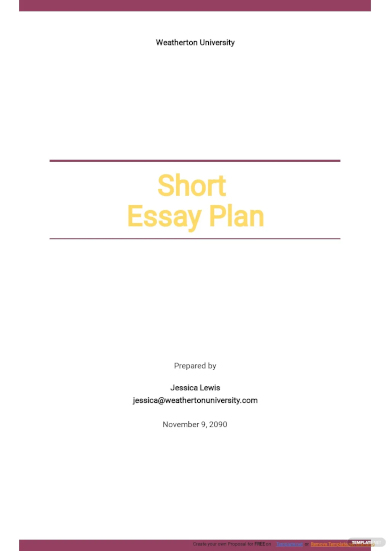
Biographical Narrative Essay Example

College Narrative Essay Example
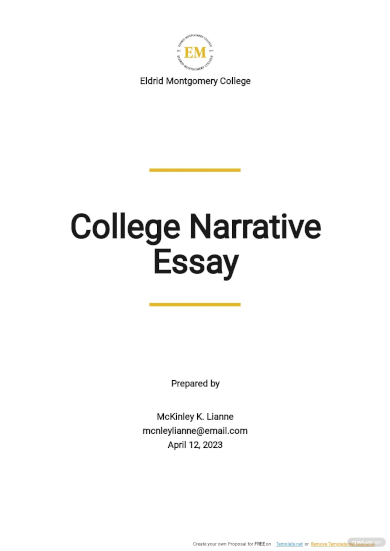
Personal Narrative Essay Example

Short Narrative Essay Example
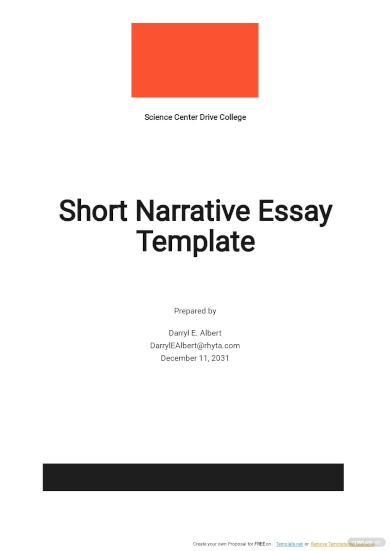
High School Descriptive Essay Example

Free Simple Descriptive Essay Plan
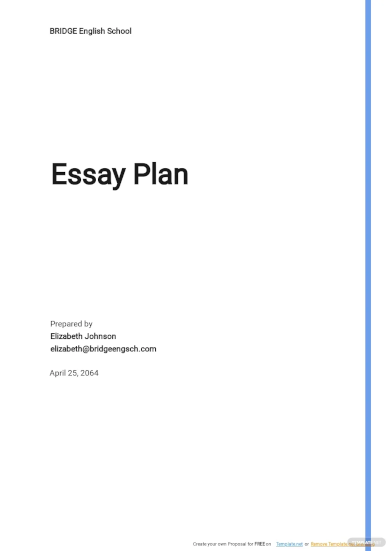
Basic Descriptive Essay Writing Example

latterdaylearning.org
Short Descriptive Essay Example

trudyamiller.wikispaces.com
Descriptive Essay Structuring Example
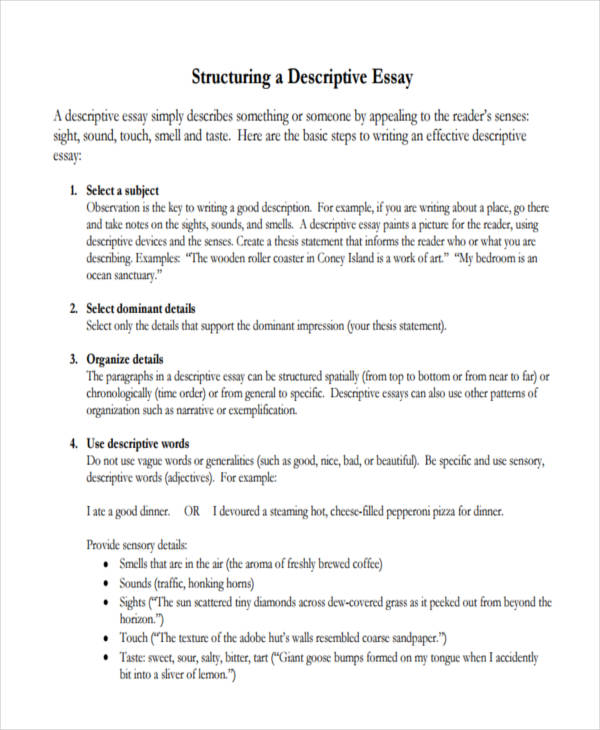
colegiobennett.org
Simple Descriptive Essay Example
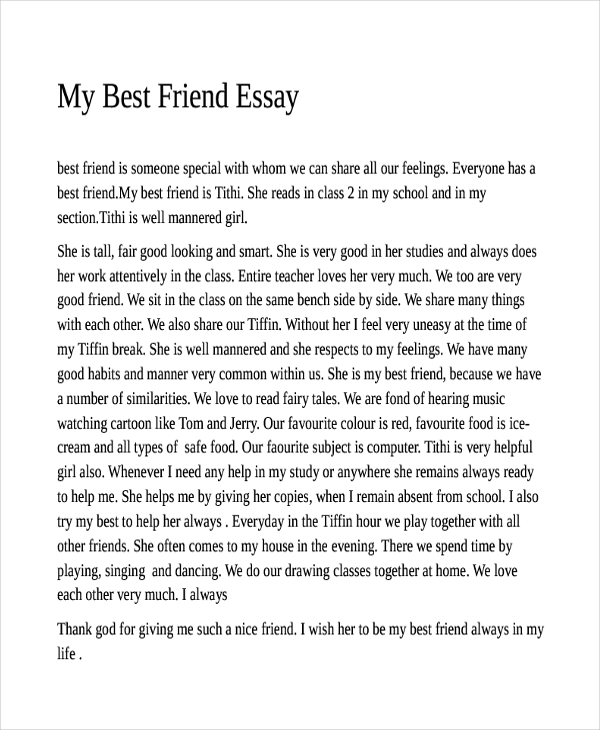
essssay.com
Narrative Descriptive Essay Example

preservearticles.com
Descriptive Essay Prewriting Example

fileserver.net-texts.com
Personal Descriptive Essay Example
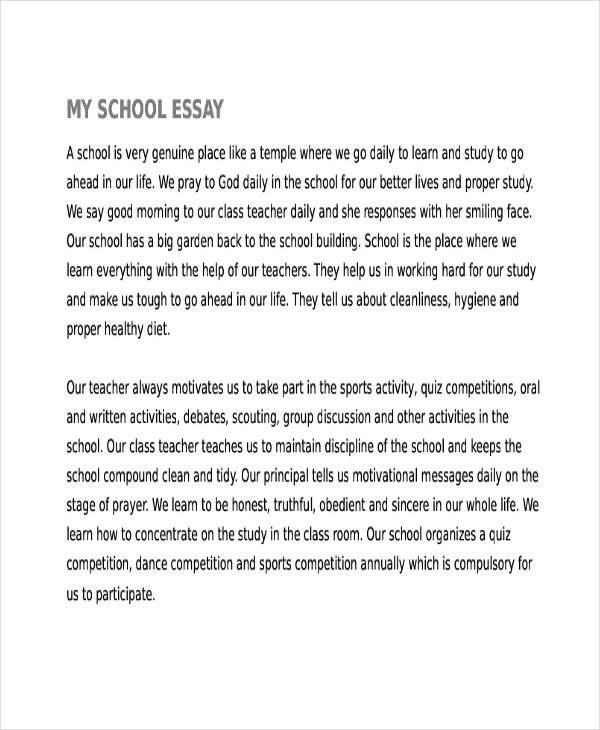
indiacelebrating.com
Descriptive Essay Characteristics Example

Descriptive Essay Description Guide Example
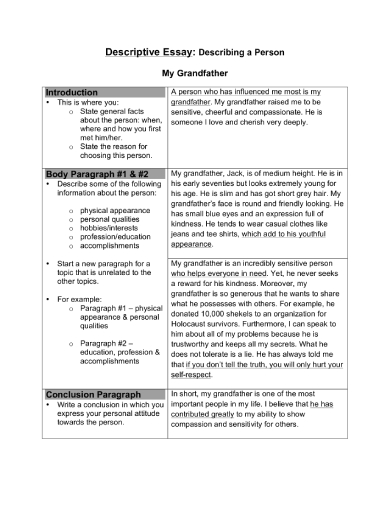
ortbinyaminaenglish.yolasite.com
Descriptive Essays about Places Example
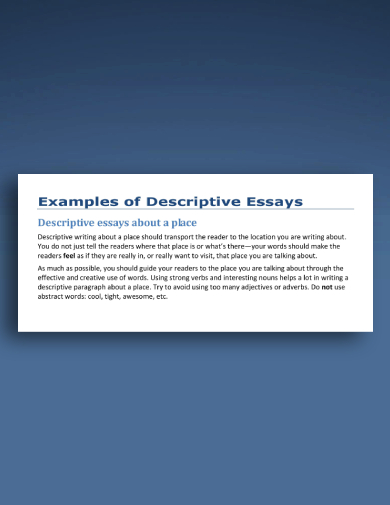
Excellent Descriptive Essay Example
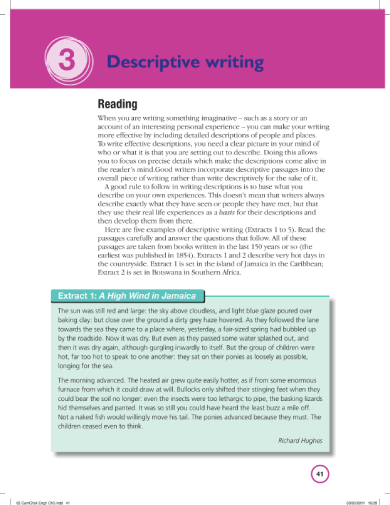
hoddereducation.co.uk
Descriptive Essay Writing Exercise Example

Educational Descriptive Essay Example

owll.massey.ac.nz
Spring Break Descriptive Essay Example
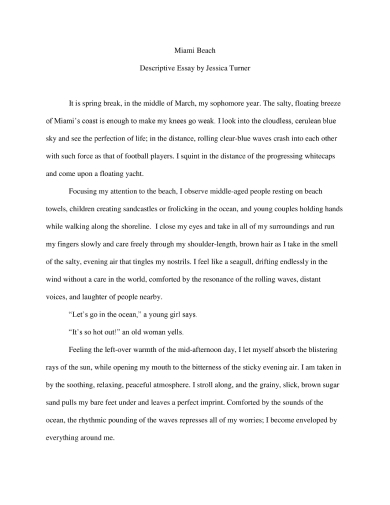
cheylin.com
Descriptive Essay Sentence Writing Example
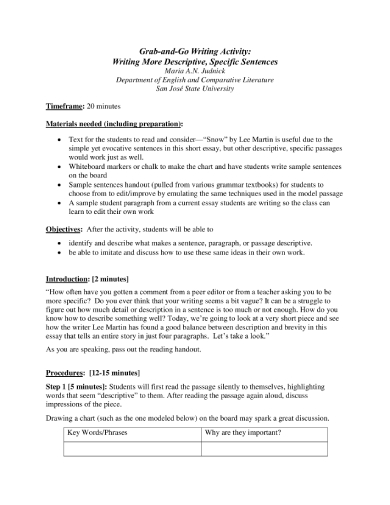
Descriptive Essay Paragraph Guidelines Example
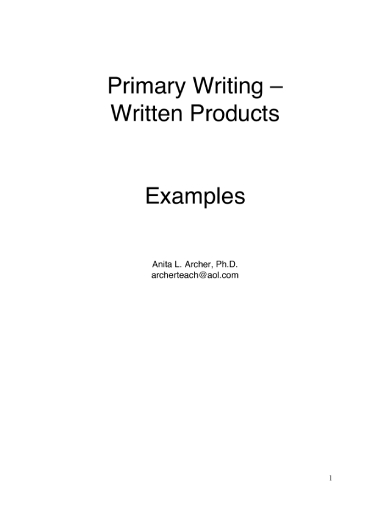
Stylish Descriptive Essay Rubric Example
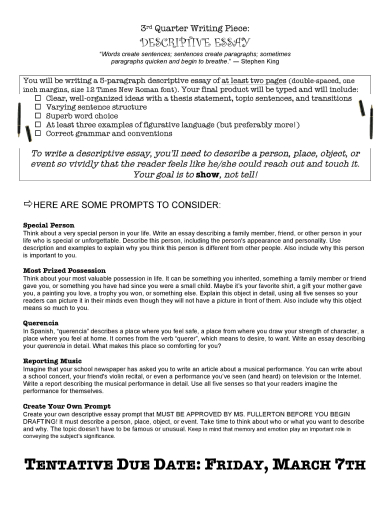
Descriptive Essay Writing Techniques Example
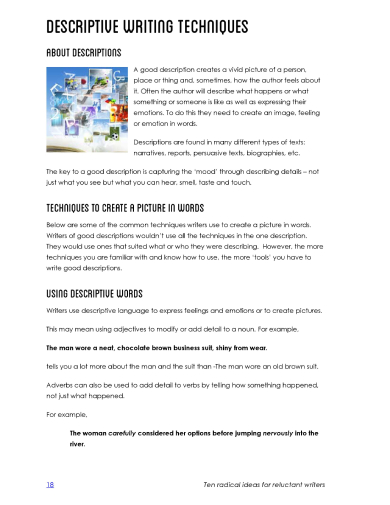
multifangled.com.au
Free Descriptive Essay Example
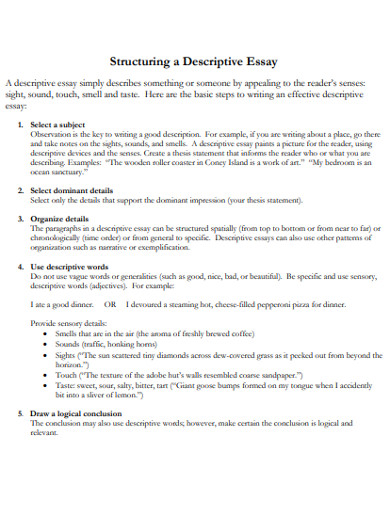
asc.weebly.com
Basic Descriptive Essay Example

hortonskids.org
Sample Descriptive Essay Example

essaytigers.com
Descriptive Essay in PDF Example
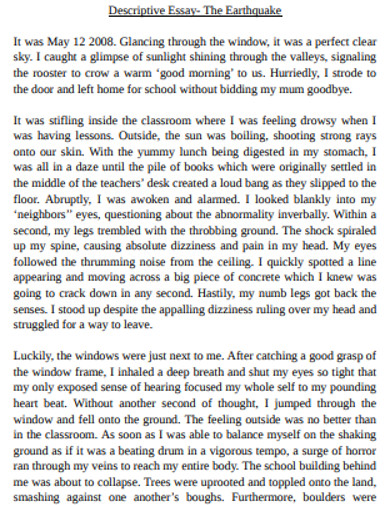
Printable Descriptive Essay Example
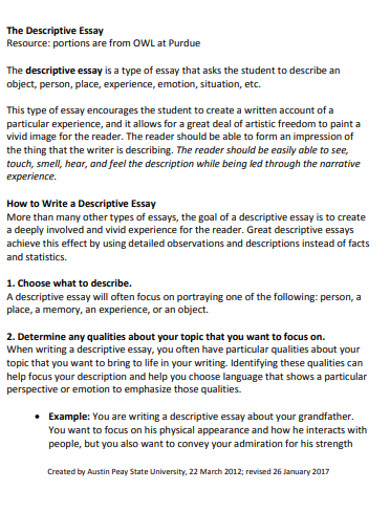
Direction Descriptive Essay Example
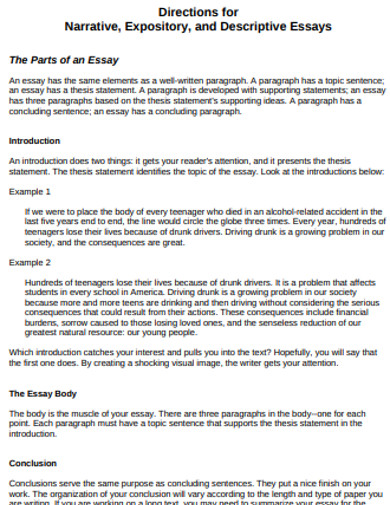
wba.aplusanywhere.com
Descriptive Essay Scoring Guide
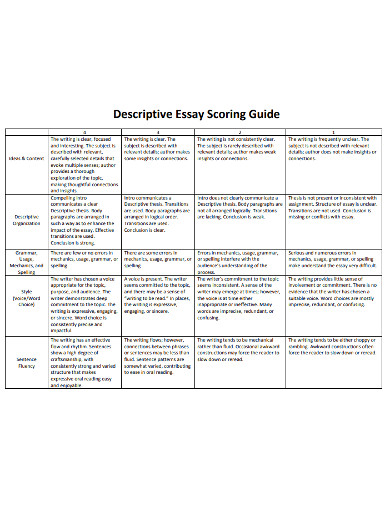
washoeschools.net
Professional Descriptive Essay

Descriptive Essay Format Example
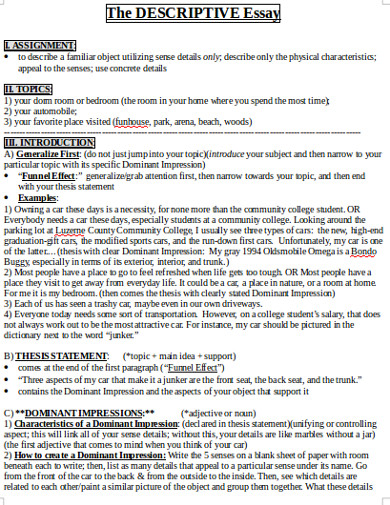
staff.kings.edu
Assignment Descriptive Essay Example

fd.valenciacollege.edu
What are the 4 types of essays?
An essay is an extended piece or composition that shows and supports a thesis or proposition. Essays help the expression of an author’s ideas in various ways. Before composing your own essay, it is important to identify its purpose first, and in doing that, distinguishing its type would be a great beginning. Correspondingly, here are the four different types of essays:
Narrative Essays: to tell
Taking it into its most basic sense, narrative essays are used if the author wants to tell a story about a real-life adventure. This type of essay is expressed in a particular point-of-view. Commonly, it is the author’s viewpoint that is being followed. Moreover, in writing your own short narrative essay , apply realistic emotions and appropriate sensory details to provide your readers with the full taste of your story. By doing this, you are not simply telling them but also engaging them in the story’s sequence and elements. It is also advisable to state verbs as vivid and as precise as possible. The thesis statement of a narrative essay is commonly found in the opening sentence or the last sentence of the introductory paragraph.
Descriptive Essays: to describe
You may confuse yourself between narrative and descriptive essays ; however, differentiating both is really easy. Rather than telling a story, a descriptive essay illustrates a specific topic such as a person, place, experience, emotion, event, etc. by means of words. You don’t simply state your experience in this type of essay; on top of that, you let your reader experience the same thing through your descriptions. In writing your own short descriptive essay , it is important to remember that you are not writing to tell but to show. Using sensory and vivid words is also recommended.
Expository Essays: to uncover and clarify
From its name itself, an expository essay is used to expose something on matters that are known to others. This type of essay is a genre of composition that aims to explain, illustrate, clarify or explicate a certain subject for the readers. Thus, an expository essay could include investigation and evaluation of ideas. This could be derived through comparison and contrast, definition, giving examples, assessment of cause and effect, etc. Moreover, in composing an expository essay, the author set his/her emotions aside for this type of essay is based on mere facts. The first point-of-view is not applied in this essay as well.
Persuasive Essays: to convince
If the expository essays talk about the facts then persuasive essays talk about arguments. The main purpose of a persuasive essay is to win over the trust of the reader to accept your viewpoint, opinion or proposition as the author. In writing a persuasive essay, your opinions should be supported by relevant facts and logical and sound reasoning. Though the essayist should lay all necessary details from both sides of the argument, he/she must comprehensibly explain why one side is correct or more favorable than the other.
Despite essays being categorized into four types, it is also important to know that an essay is not limited to one type only. In some cases, a narrative essay could also be mixed with a short descriptive essay or a short persuasive essay combined with an expository type. Nevertheless, identifying the purpose of your essay is vital before writing. However, if doing it challenges you, knowing these types is a great substitute.
What Is the Purpose of a Descriptive Essay?
Some people like to watch movies rather than to read books. This is because an actual image is easier to absorb than that on writing. This is why it’s important for a writer to pay close attention to detail. A descriptive essay conclusion should provide the reader with a mental picture of a given matter.
This is especially essential when writing pieces meant for a younger audience, as they have a more imaginative mind than the average adult. A writer must be creative when using imaginative language in order for the reader to properly comprehend what is being portrayed. To do so, the writer should also be knowledgeable about the topic. After all, you don’t want to give your readers the wrong interpretation .
How to Write a Descriptive Essay
A good descriptive essay comes from a knowledgeable and imaginative mind. Thus, in descriptive writing , it’s important for one to be specific on details. After seeing a few samples that we have shown earlier, here is a step-by-step guideline to help you in composing a descriptive essay worth reading.
1. Choose a topic.
If there is no given topic, it would be great to select one that you are knowledgeable and familiar with. Considering that your whole descriptive essay would revolve on this specific subject, choosing a topic that you recognize would keep everything simpler for you. By doing such, you can freely decide what words are the most appropriate to use; as a result, it will be easier for you to describe your topic. Furthermore, your reader could be meticulous and educated on your subject, so being knowledgeable about your own topic is wise prevention against bad impression.
2. Construct your thesis statement.
Alright, now that you have your own topic already, it is important to know what specific message you want your reader should focus on reading your whole essay. Thus, it is important to always provide a thesis statement , the umbrella sentence of all your ideas. Write this in one concise sentence in your introduction and conclusion. Often, a thesis statement is mentioned in the last sentence of your introductory paragraph.
3. Gather the necessary information and ideas.
Though you are already proficient in your topic, it is still recommendable to research about your specific subject. With this, you are not just gaining new information but also checking the correctness of your knowledge. It would also be great to expand your vocabulary, especially in adjectives and adverbs, since writing one of these involve loads of describing. Moreover, also focus on the sensory words that correspond to sight, smell, taste, sound, and touch of the given subject.
4. Create an outline.
Obtaining all of the significant details, crafting an essay outline for your work will allow you to arrange your contents in a rational and chronological order. Also, being educated with different formats in writing an essay would really make a great difference in your composition.
5. Proofread.
After writing your own descriptive essay, it might feel perfect already, but most of the time, it is not. Hence, read your entire work and review if there are any errors pertaining to your grammar and spelling. Furthermore, asking for help from a well-versed friend of yours to conduct a peer-review to your work would be extremely useful.
6. Finalize your composition.
The next thing to do after the editing is to finalize your descriptive essay to its finest version. Make sure that your essay follows a specific format, consisting of the proper parts of the essay .
Smart Tips for Writing a Descriptive Essay
The fundamentals of the descriptive writing procedures are now given to you; nevertheless, it would always be great to aim for something better. Now, here are some intelligent tips that would make your essay certainly more compelling.
Establish a connection with your writing.
The key to writing a good effective essay is to have the passion to write it; thus, in choosing your topic it would be great to have a familiar one or a subject that truly makes you curious. Let your interest be the seed of your fruitful composition.
Spend time to think.
In writing your own descriptive essay, let your brain do its job. Do not rush, give yourself an adequate amount of time to ponder on the necessary details that you should include and what approach you should apply. Provide yourself a clear plan of your descriptive essay writing. Moreover, look at your topic from different angles. This will allow you to take a closer look at every detail of your subject.
Apply the word vomit technique.
The word vomit technique or also called as “ free writing ” is the spontaneous use of words without considering any rules. This is a good technique in making a draft of your starting an essay . It allows your ideas to keep flowing without exerting much effort. Once this is done, you can pick out points that would go well with your essay.
Take a break before finalizing it.
Because right after writing your composition, your thought highly recognizes your word construction; thus, it does not really notice the errors and automatically treats them as correct pieces of your work. Allowing your mind to clear out for a while will make it easier for you to critic your own work. Furthermore, utilizing grammar-checking software is also a splendid move.
Text prompt
- Instructive
- Professional
Write a descriptive essay about a place you love to visit and what makes it special.
Describe in a descriptive essay your dream job and what it would be like to work there.
College Comp
Tuesday, january 22, 2013, blog #10: reflection of dominant impression, no comments:, post a comment.

IMAGES
VIDEO
COMMENTS
Descriptive writing can be difficult without proper preparation as writers struggle to maintain object or person descriptions for the essay's length. Using the dominant impression technique, you may find the essay comes together easier with stronger and consistent character and object descriptions.
Through strategic use of descriptive detail and sensory language, you filter your reader's perception of a character, setting, or event. When you guide your reader using careful word choice, you provide them with a subjective description—in other words, a description based on the dominant impression you wish them to have.
A dominant impression results in a vivid mental picture of a person, place, or object. Show the reader your dominant impression; don't tell the reader. Your impression of someone or something starts as a vague picture in your mind, but your mission is to take it to a high-definition, three-dimensional picture for your reader, using sensory ...
c. Creates a dominant impression: the outcome of effective description Thus, descriptive language attempts to create a verbal equivalent of the material world or the emotional world by providing words that mean the same thing to both writer and reader. Such writing means that both share an awareness of the context. For example, the doctor and her
Writing descriptively involves choosing your words carefully. The use of effective adjectives is important, but so is your choice of adverbs, verbs, and even nouns. It's easy to end up using clichéd phrases—"cold as ice," "free as a bird"—but try to reflect further and make more precise, original word choices.
The first step in using effective description is to focus on a dominant impression. A dominant impression creates a mood or atmosphere in your paper. This mood can be conveyed through effective descriptive writing. For example, pay attention to the mood in the following paragraph. My family ate dinner at Merrymead Diner every Friday night while ...
Dominant impression: An overall attitude, mood, or feeling about the subject; this is the implied thesis of a descriptive essay, suggesting the author's main point about the subject. This sentence could communicate awe, inspiration, anger, or distaste.
Its main goal should be focusing on information that will make a dominant impression in readers' minds instead. 2- Research and Gather Important Details. ... Example Descriptive Essay Topics for Students. Choosing a topic for your descriptive essay is quite interesting. You get to choose something that you have an emotional connection with.
Young girls chase one another around a silver-branched birch while their parents sit close by, talking and sharing the steaming contents of their thermoses. A pair of elderly gentlemen play chess on the sidelines, blowing on their hands occasionally to warm them. What's just been described reads like a happy scene, where people are having fun ...
The introduction paragraph of your descriptive essay would, like openings of other types of academic writing, introduce the subject and provide a thesis at or near the end of the paragraph. Next would come a series of body paragraphs that build the dominant impression with descriptive details.
Descriptive details aid in developing the overall dominant impression. The dominant impression is a basic idea or theme that the writer wants to express from the complexity of the story's construction. A city, for example, can be described as exciting or scary depending on carefully chosen words, or from a subtly crafted mood. A thesaurus ...
Overall, a descriptive essay will focus upon one clear, dominant impression or idea. This dominant idea should be made clear in the thesis, and should guide the writer's selection of detail. Although the summary is not an appropriate place for a large amount of description, the main idea in the response can be effectively emphasized through the ...
Dominant Impression. In a descriptive essay, you want to create a dominant impression — that is, a central theme or overarching idea that holds the entire piece together. ... Famous Examples of Descriptive Essays "Once More to the Lake" by E.B. White This essay eloquently encapsulates White's journey back to his childhood lake. Through his ...
Descriptive essays breathe life into words by painting a vivid picture of a person, place, thing, or experience. They employ sensory details and expressive language to make the subject come alive for the reader. Here's a basic yet effective structure you might use when crafting a descriptive essay: 1. Introduction.
dominant impression is a quality, mood, or atmosphere that reinforces the writer's purpose. It is primarily a feature of narrative and description-based writing. The dominant impression is sometimes called the controlling idea. In this sense, the writer must be consistent. For example, the dominant impression of one snowfall could be ...
Descriptive Essay Example About a Visit. A visit to a doctor, a visit to a zoo, and your first visit to a museum, all make excellent descriptive essay topics. If you go somewhere for the first time, it is natural to have a plethora of feelings and emotions. These could be feelings of joy and even fear.
A descriptive essay uses physical details of a person, place, or thing in order to give readers a sensory impression of whatever you are describing. Descriptive detail also, generally, conveys a writer's impression of or attitude about the subject. A descriptive essay tells the reader: • what something looks like • what it feels like
First, they identify a character. Second, they identify each character uniquely. Third, they help recall a character to your reader's mind after an absence. He uses Kojak as an example; that character's tags were his ever present lollipop and his shaved head. One of the most effective ways of using tags and traits is through formulating a ...
A descriptive essay is a type of writing that aims to vividly describe a person, place, object, or event. In this type of essay, the writer uses sensory details such as sight, sound, smell, taste, and touch to create a clear and vivid image in the reader's mind. The goal of a descriptive essay is to evoke a strong emotional response or create ...
An example of descriptive writing was dominant impression. It is the general feeling a writer wants the reader to understand about someone or something. In class we took a look at some examples of pieces that would give us a perfect idea of what a descriptive paper should look like, using dominant impression.
The dominant impression is the garden and the surroundings that allow the flower of the thesis statement to bloom... or something like that. All good writing must have a thesis, a central point ...
Descriptive details aid in developing the overall dominant impression. The dominant impression is a basic idea or theme that the writer wants to express from the complexity of the story's construction. A city, for example, can be described as exciting or scary depending on carefully chosen words, or from a subtly crafted mood.
Authors achieve dominant impression by writing content that is descriptive with details and has purpose. An example of this can be seen in an author writing about a specific experience that they had. The author would write down the sensory sounds, views, smells and meaning that were present in that significant moment.
if the essay is a description of your sister, you might make your dominant impression about how intelligent and organized she is. It creates a lens through which the reader sees the rest of the essay. For example...